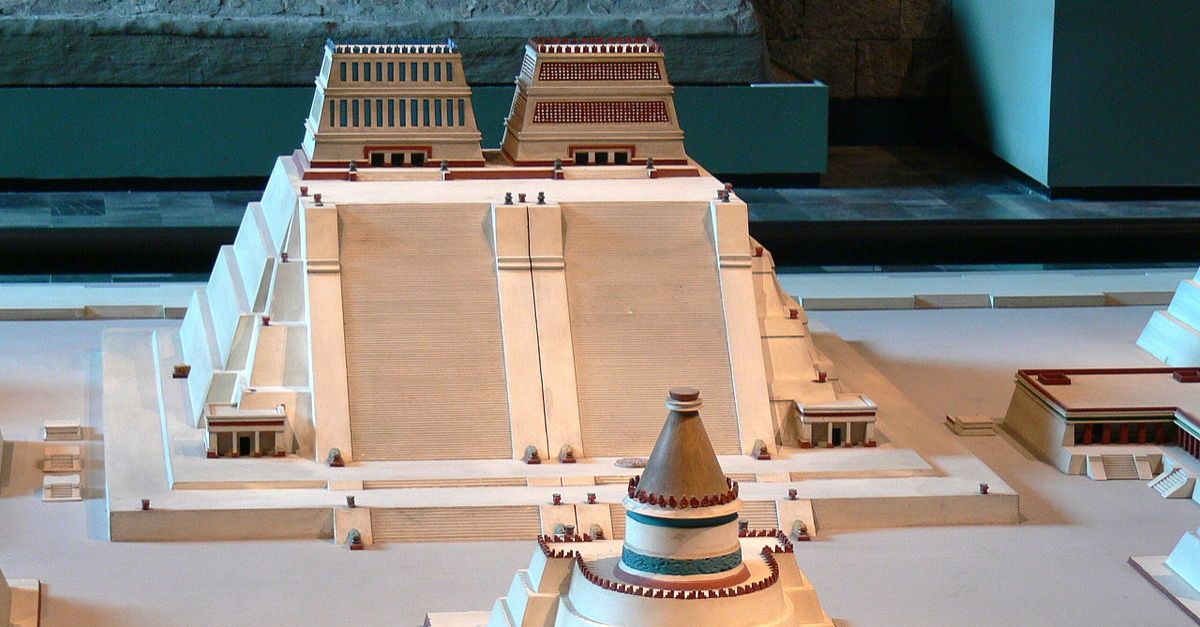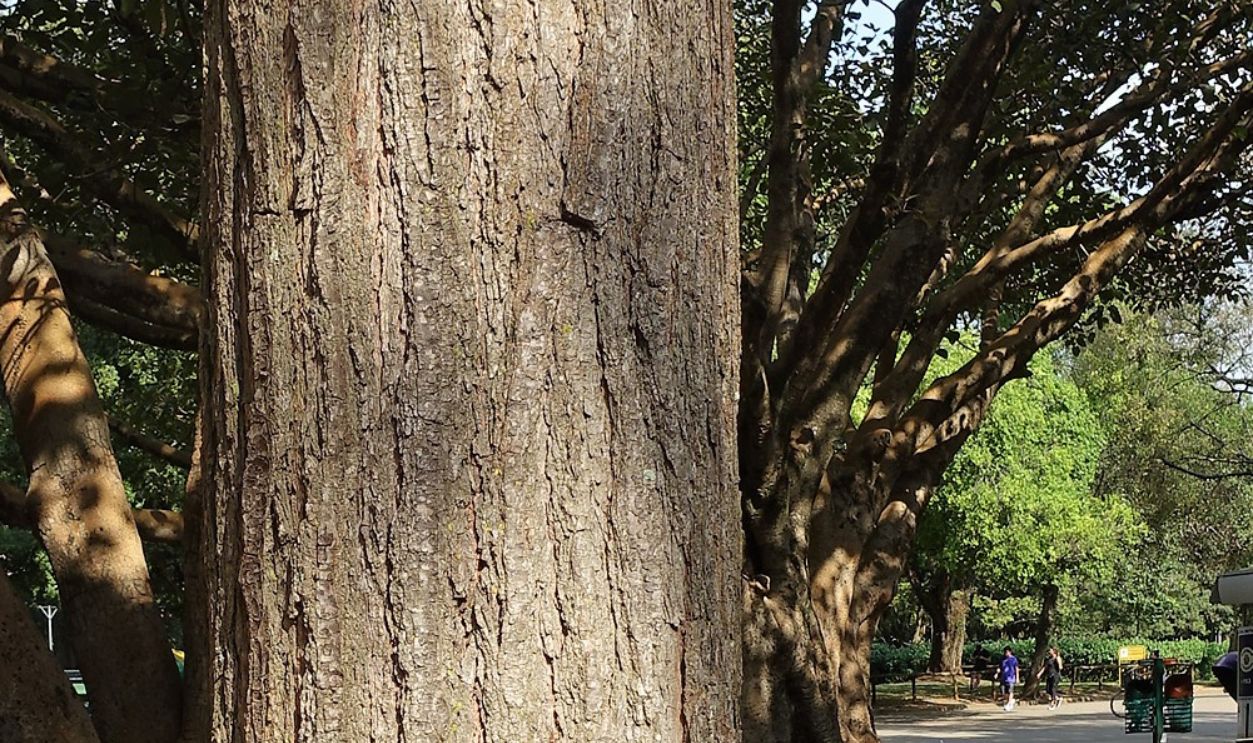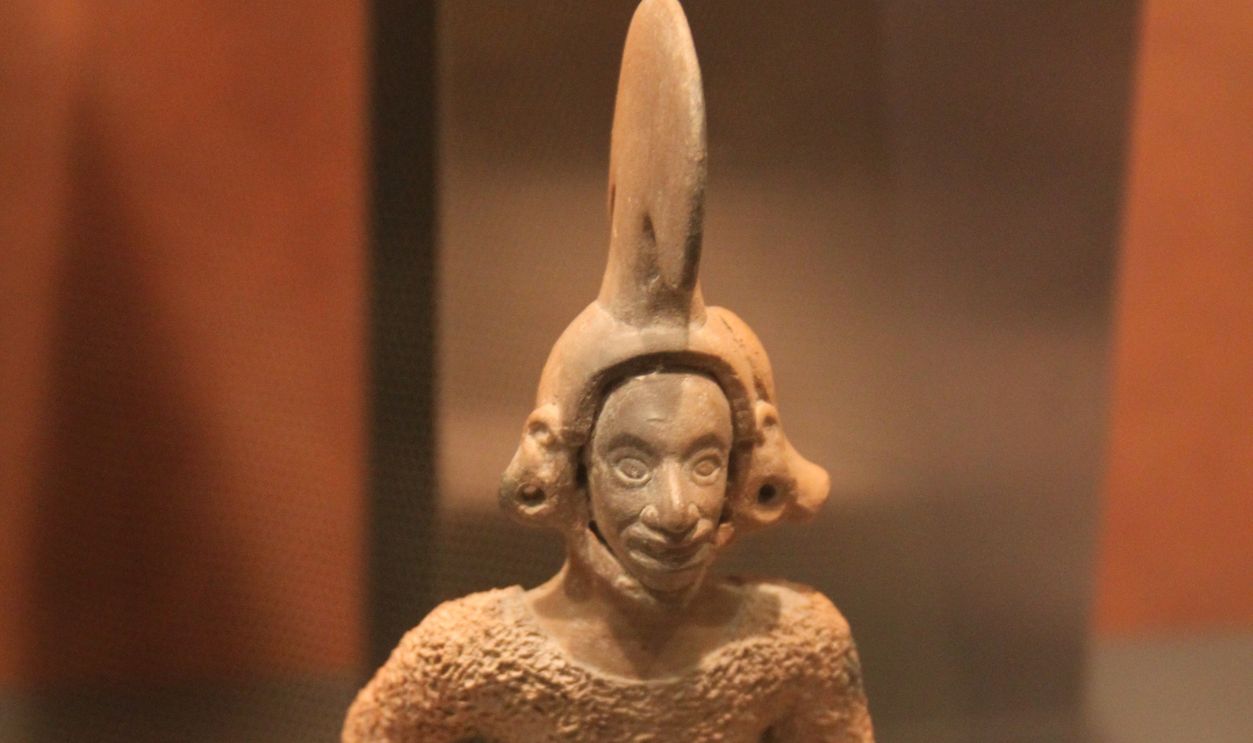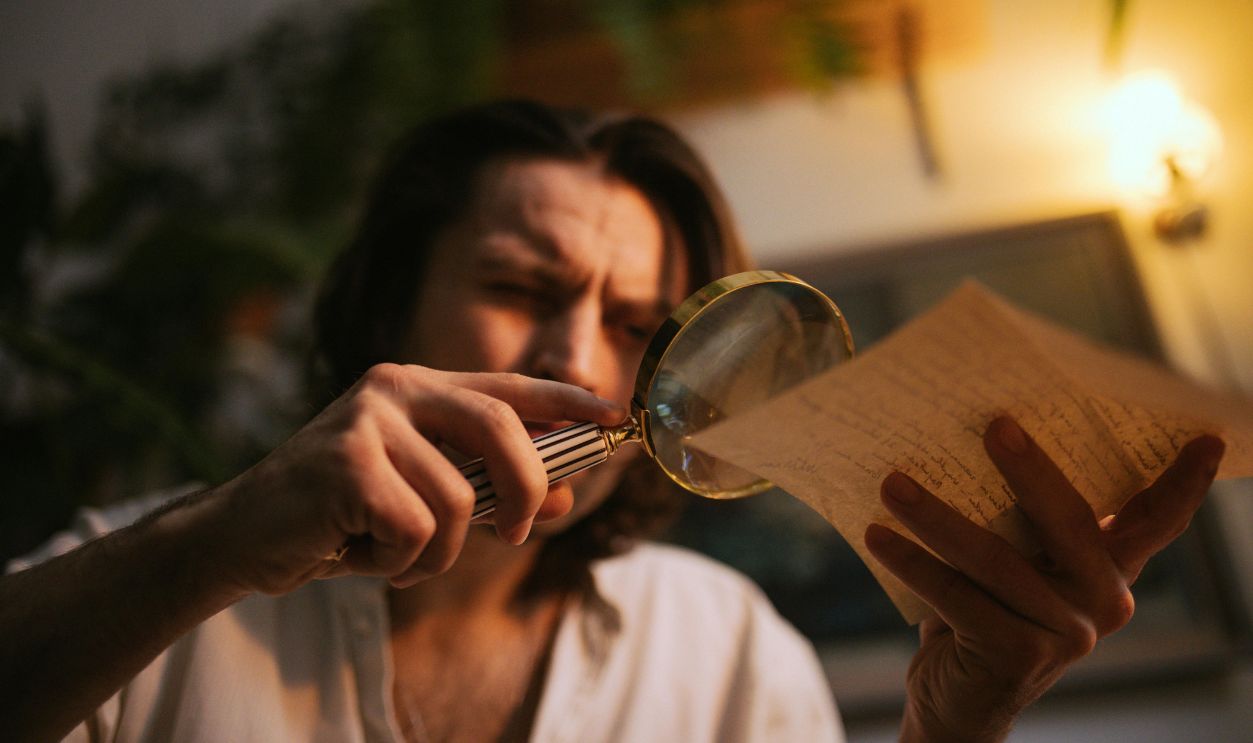Whispers Of Fire
The Aztecs were masters of art, astronomy, and rituals who believed the world's survival depended on the balance between fire and sacrifice. But a mask that is believed to represent the power of Xiuhtecuhtli, the Aztec fire god, carries deep secrets that we're about to explore.
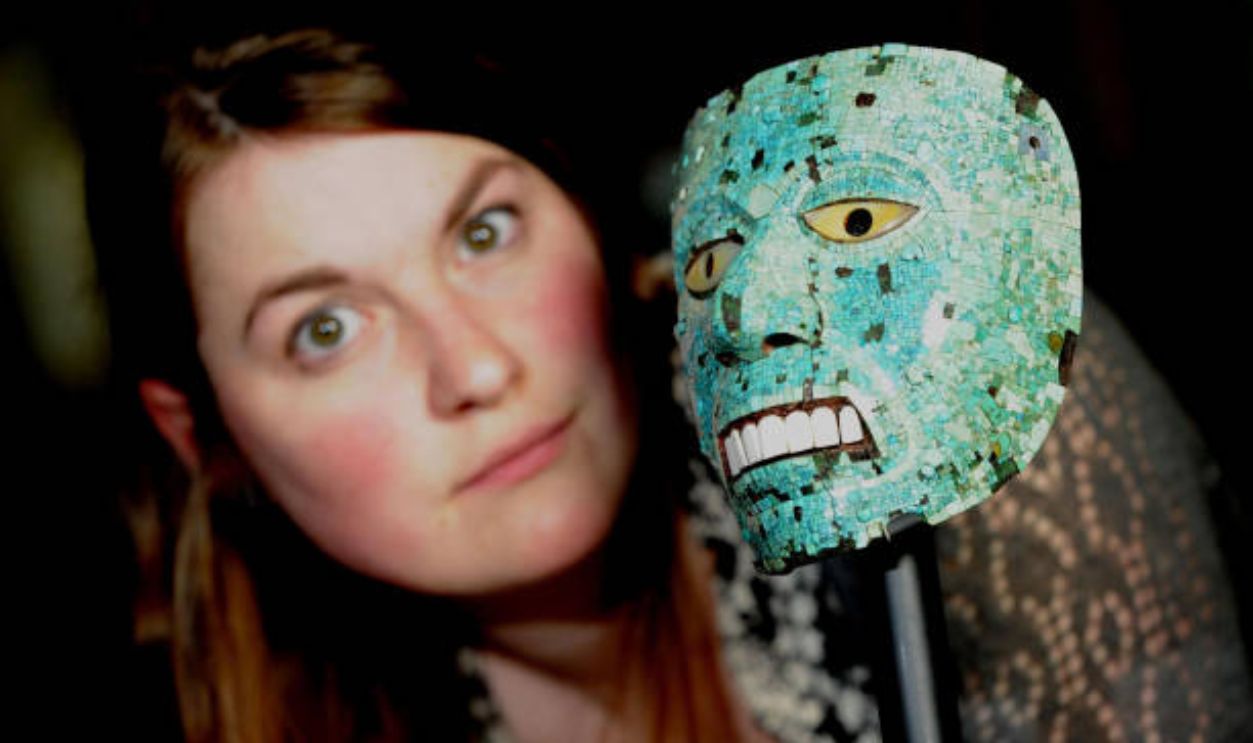
A Trove Of Aztec Artifacts
The British Museum is home to a wide collection of Aztec artifacts, each telling you stories about one of the most sophisticated civilizations of the ancient world. These treasures, collected over centuries, reveal the Aztecs' artistic brilliance and the sophistication of their society.
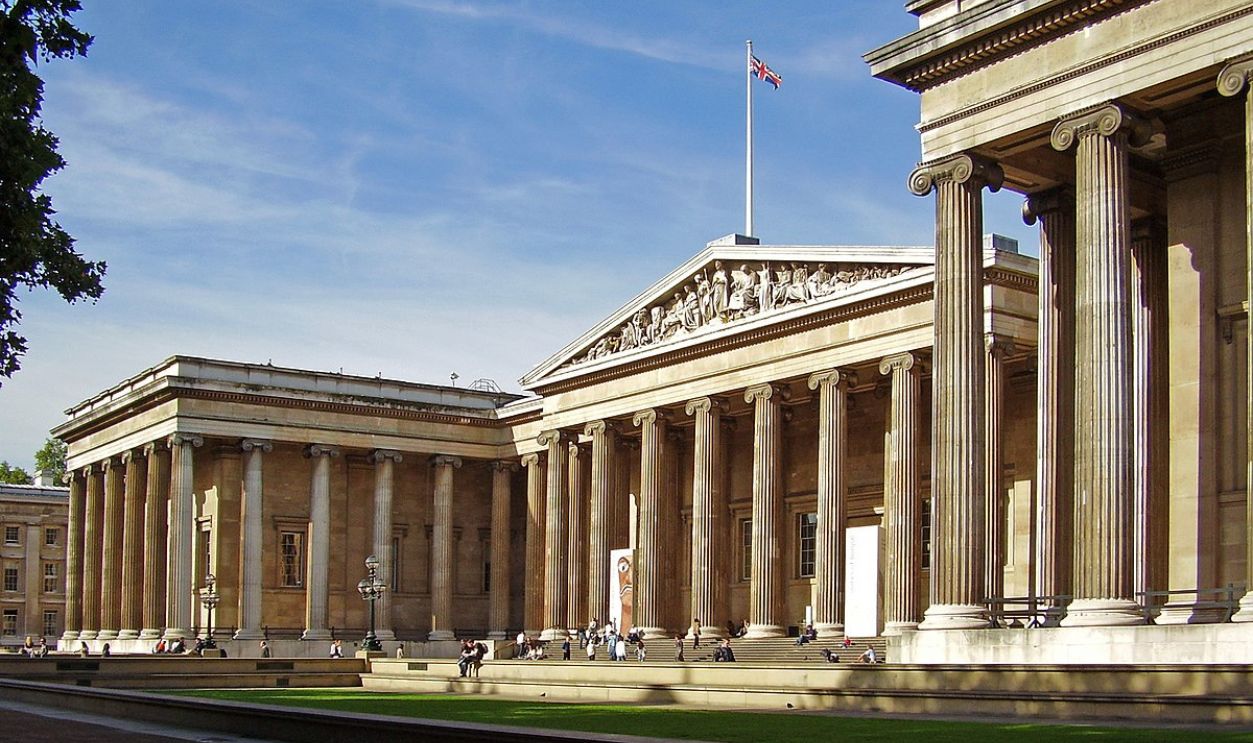 Ham, CC BY-SA 3.0, Wikimedia Commons
Ham, CC BY-SA 3.0, Wikimedia Commons
Visitors Are In For A Treat
Among these, turquoise mosaics, stone carvings, and ceremonial objects transport visitors back to the heart of Tenochtitlan, the Aztec capital. Each piece tells a story of devotion and the allure of this Mesoamerican culture built by people who inhabited the region as early as 9,000 BC.
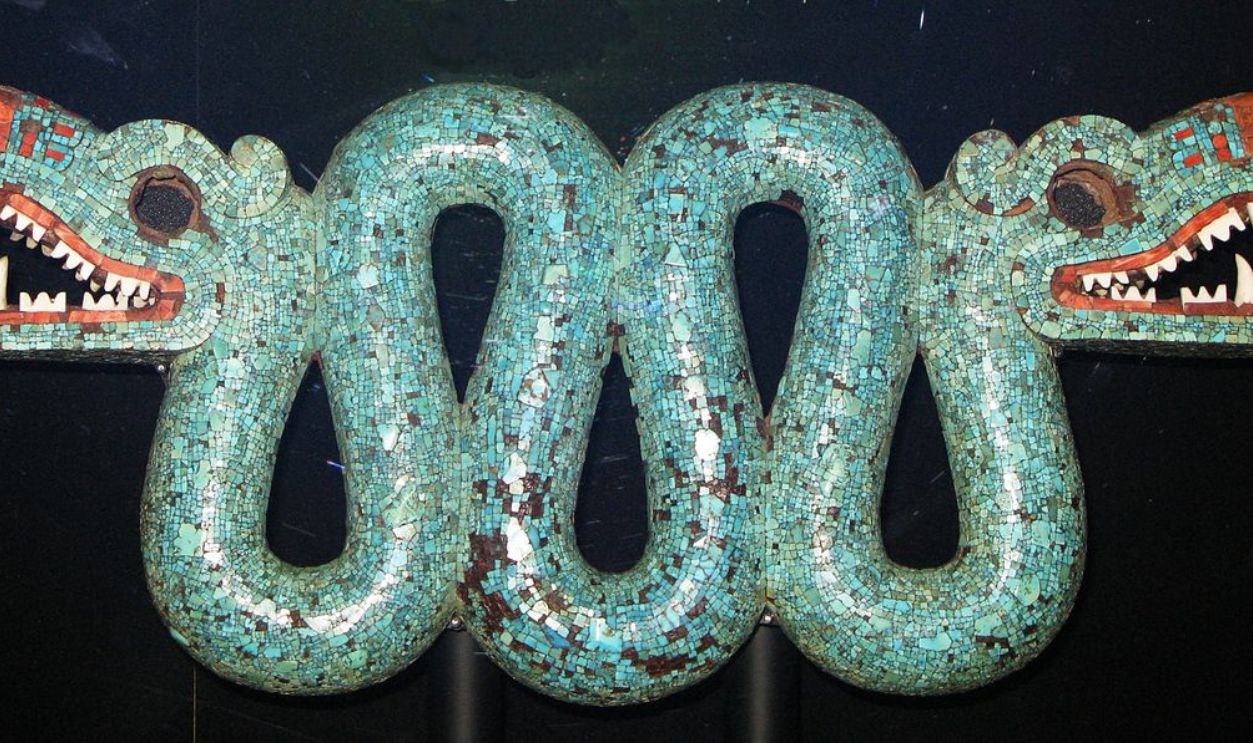 British Museum, CC BY-SA 4.0, Wikimedia Commons
British Museum, CC BY-SA 4.0, Wikimedia Commons
A Treasure Among Treasures
Amid the British Museum's impressive collection, one artifact stands out as both stunning and enigmatic—the Mask of Xiuhtecuhtli. Encrusted with turquoise and adorned with gold and mother-of-pearl, this mask isn't merely a piece of art but a symbol of power and spirituality.
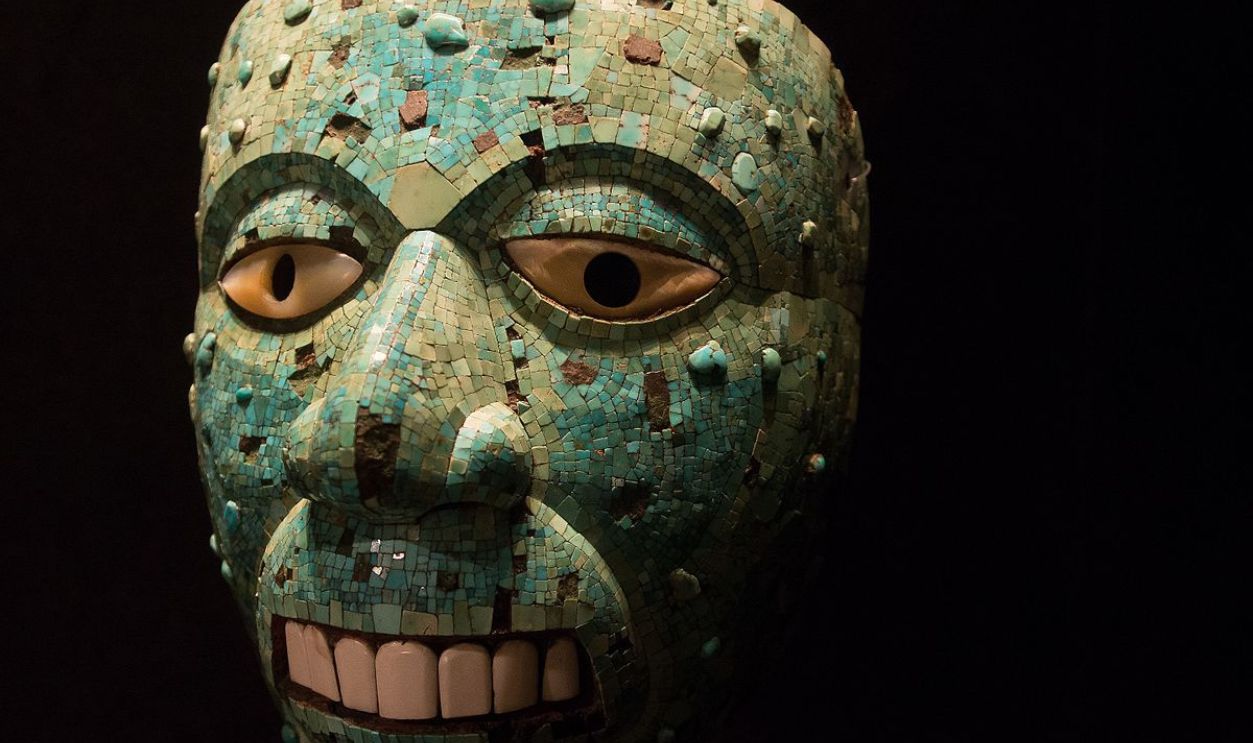 Denis Bourez, CC BY 2.0, Wikimedia Commons
Denis Bourez, CC BY 2.0, Wikimedia Commons
With Mysterious Secrets That Need To Be Discovered
The unique design suggests the mask played a role in rituals central to Aztec life, making it a centerpiece for understanding their culture and religious beliefs. So, who wore this mask, and what was it used for? How did it end up in Europe, and why?
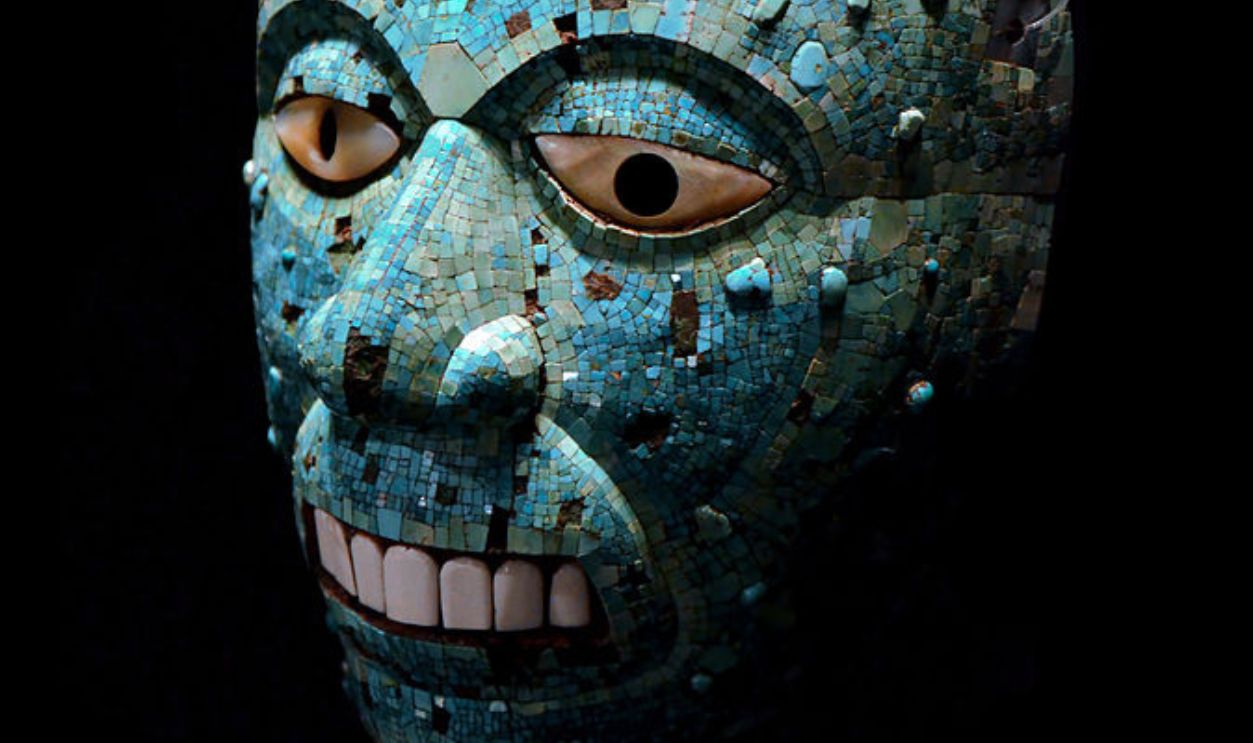 Hans Hillewaert, Wikimedia Commons
Hans Hillewaert, Wikimedia Commons
A Glimpse Into The Vibrant World Of The Aztecs
Known as the Mexica, the Aztecs built a civilization that thrived on art, science, and spirituality. At their height, they ruled much of Mesoamerica, with Tenochtitlan as their glittering capital. Their society revolved around a complex pantheon of gods, legends, elaborate rituals, and an agricultural system that sustained millions.
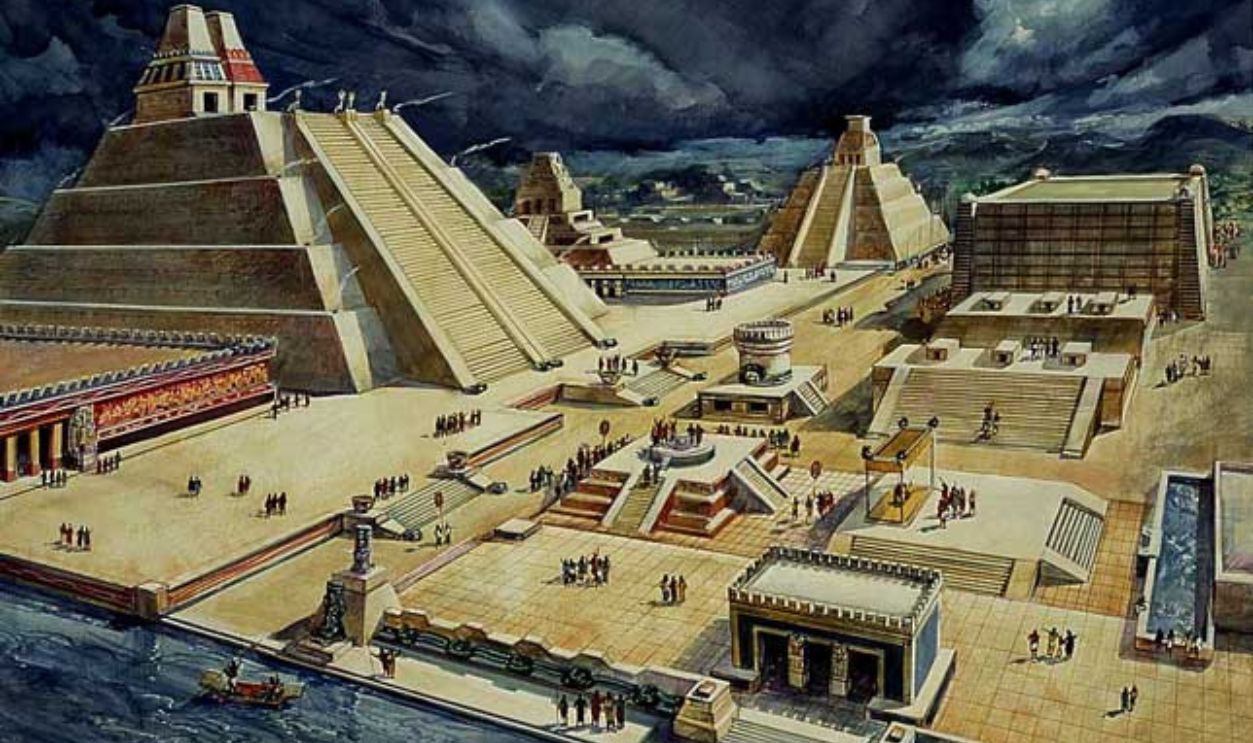 Diego Rivera, Wikimedia Commons
Diego Rivera, Wikimedia Commons
The Masters Of Innovation
From their towering pyramids to their intricate calendar, the Aztecs were masters of innovation and symbolism. However, their way of life was forever altered when Spanish forces arrived, leaving behind artifacts like the Mask of Xiuhtecuhtli to hint at their former glory.
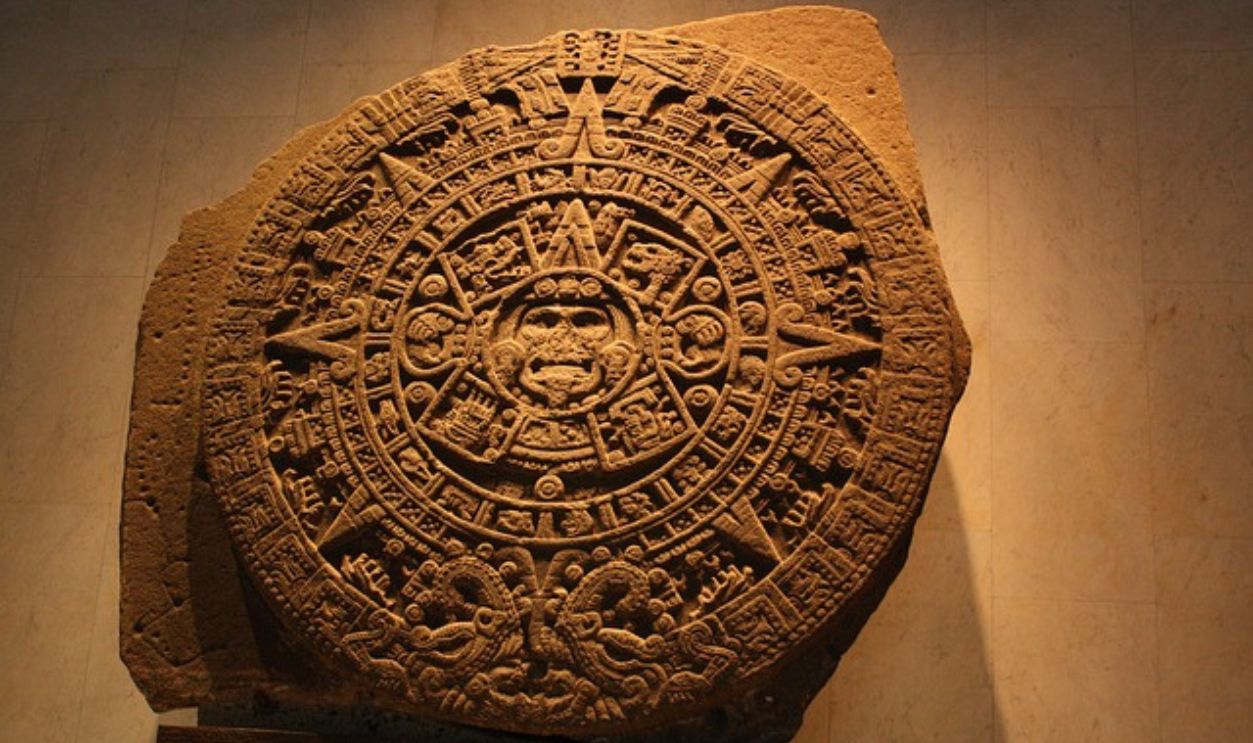 Consejo Del Sitio, CC BY-SA 4.0, Wikimedia Commons
Consejo Del Sitio, CC BY-SA 4.0, Wikimedia Commons
It Starts With A Precious Mineral
In Aztec culture, turquoise was a divine symbol. Associated with Xiuhtecuhtli, the fire god, turquoise signified renewal and cosmic power. Its rarity made it a prized material, often reserved for objects of great religious or political importance that only a few could touch.
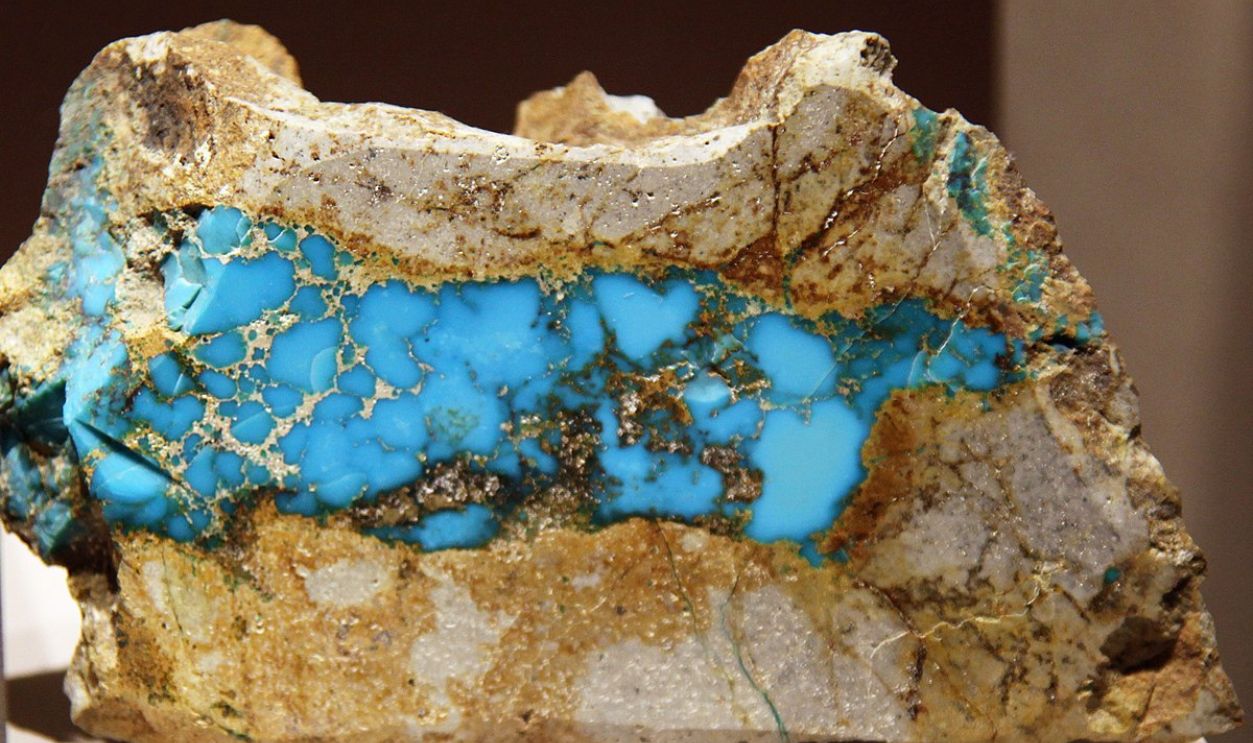 Tim Evanson, CC BY-SA 2.0, Wikimedia Commons
Tim Evanson, CC BY-SA 2.0, Wikimedia Commons
The Power Of Turquoise
The Aztecs believed turquoise connected the mortal world to the divine, which is why it adorned masks and ceremonial items. They even used it in shields, armbands, sacrificial knives, and pieces of jewelry. According to Science (the website and journal), they even used it to decorate their wolves and other sacred animals.
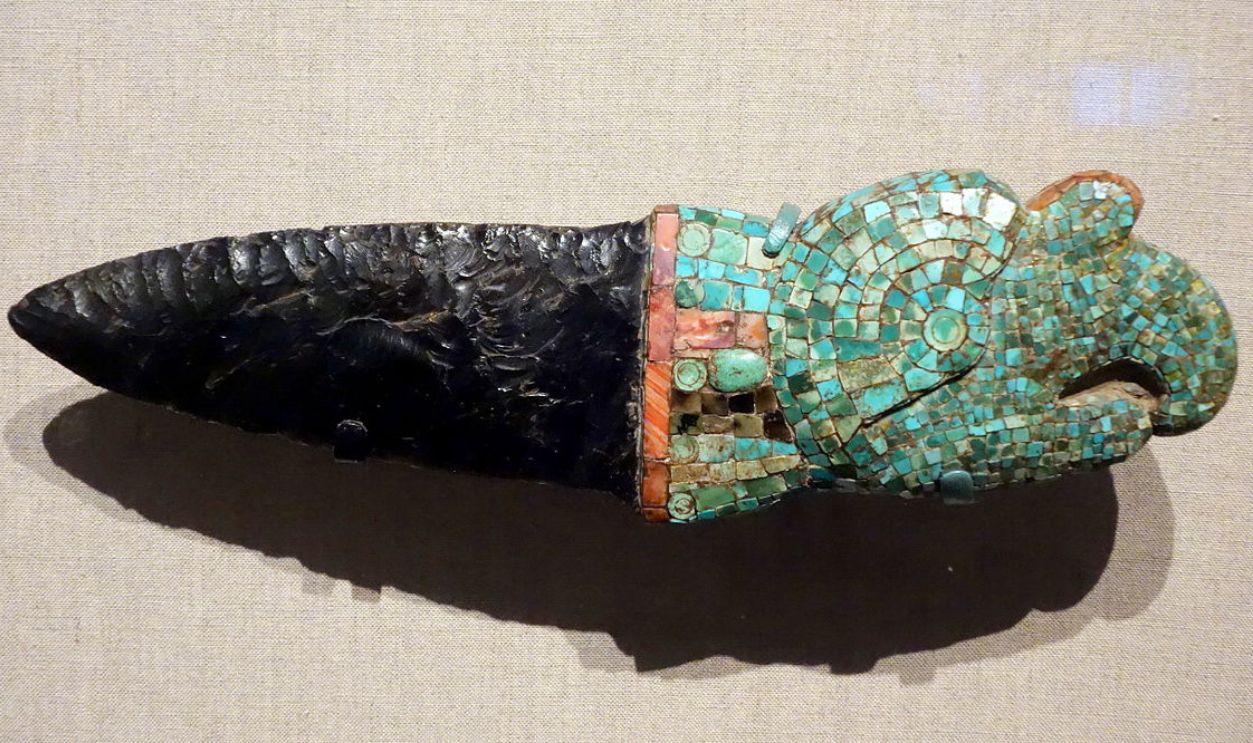 Daderot, CC0, Wikimedia Commons
Daderot, CC0, Wikimedia Commons
It Was Their Favorite
A quick look at Aztecs' artifacts show that they were fascinated with turquoise due to its rarity that made it sought after. Its luminous blue-green hues were a constant reminder of the heavens and the sacred fire that sustained their civilization. The precious mineral also symbolized their life-giving waters.
 Rob Lavinsky, iRocks.com, CC BY-SA 3.0, Wikimedia Commons
Rob Lavinsky, iRocks.com, CC BY-SA 3.0, Wikimedia Commons
The Gemstone Of The Gods
Turquoise was associated with Xiuhtecuhtli, the fire god, and Tlaloc, the rain god. It tied the cyclical nature of life to the eternal presence of the gods. The Aztecs sourced turquoise through trade networks that stretched far beyond their empire for centuries.
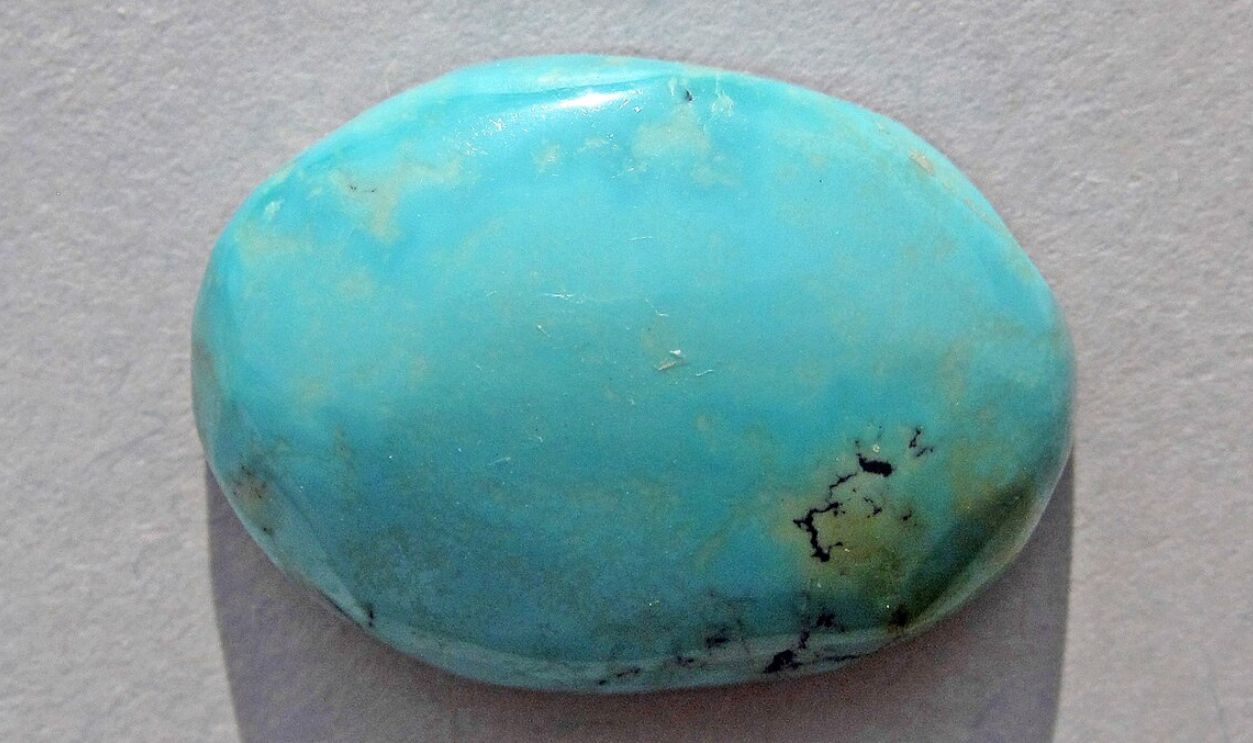 James St. John, CC BY 2.0, Wikimedia Commons
James St. John, CC BY 2.0, Wikimedia Commons
It Was Reserved For The Elite
Adorning everything from jewelry to ceremonial masks, the gemstone symbolized the connection between the heavens and earth. As a result, it was a fitting choice for a mask dedicated to a deity of cosmic importance. This mask was probably worn by priests during prayers and other sacred rituals.
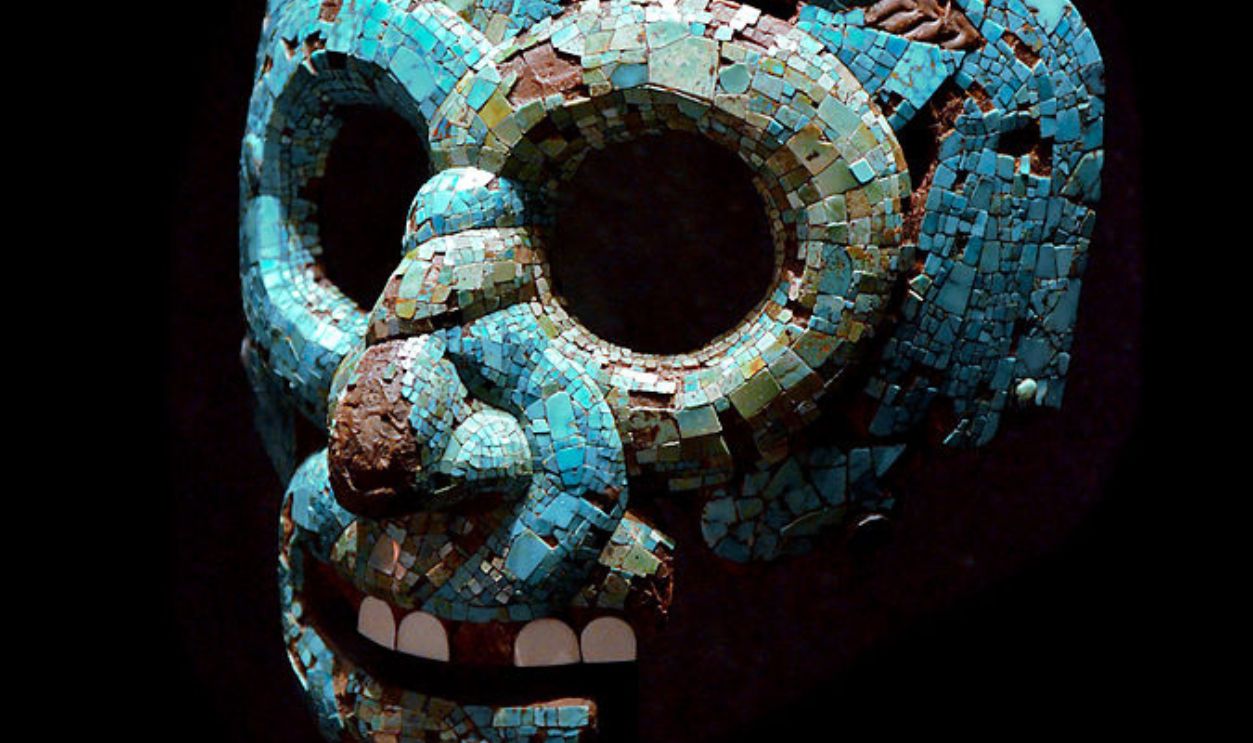 Hans Hillewaert, Wikimedia Commons
Hans Hillewaert, Wikimedia Commons
Conqueror Who Changed An Empire's Fate
Hernán Cortés was the Spanish conquistador who led the expedition that destroyed the Aztec Empire. Arriving in Mesoamerica in 1519, Cortés was a skilled tactician and a controversial figure, who eventually put an end to the last empire in the Valley of Mexico.
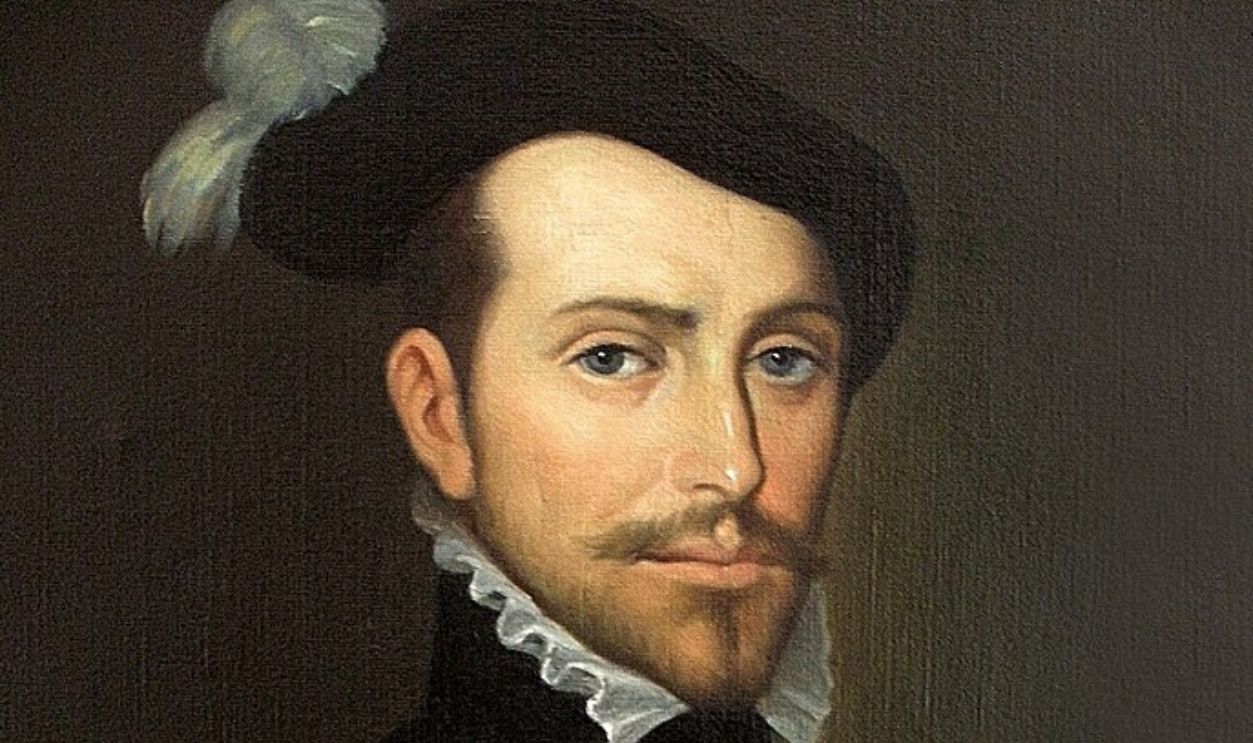 Naval Museum of Madrid, Wikimedia Commons
Naval Museum of Madrid, Wikimedia Commons
Drawn By Ambition And Greed
For years, Cortés was fascinated by stories he heard about the wealthy empire of the Aztecs. He thought that with cunning alliances and military strategy he could claim its riches for Spain. However, it wasn't an easy task and the aftermath was devastating.
 Royal Academy of Fine Arts of San Fernando, Wikimedia Commons
Royal Academy of Fine Arts of San Fernando, Wikimedia Commons
Used Insiders' Help
He formed alliances with indigenous groups who opposed Aztec rule and used them to undermine the mighty empire. His ambition resulted in the capture of Tenochtitlan and the eventual colonization of Mexico after a 93-day besiegement of the city, and the natives eventually surrendered.
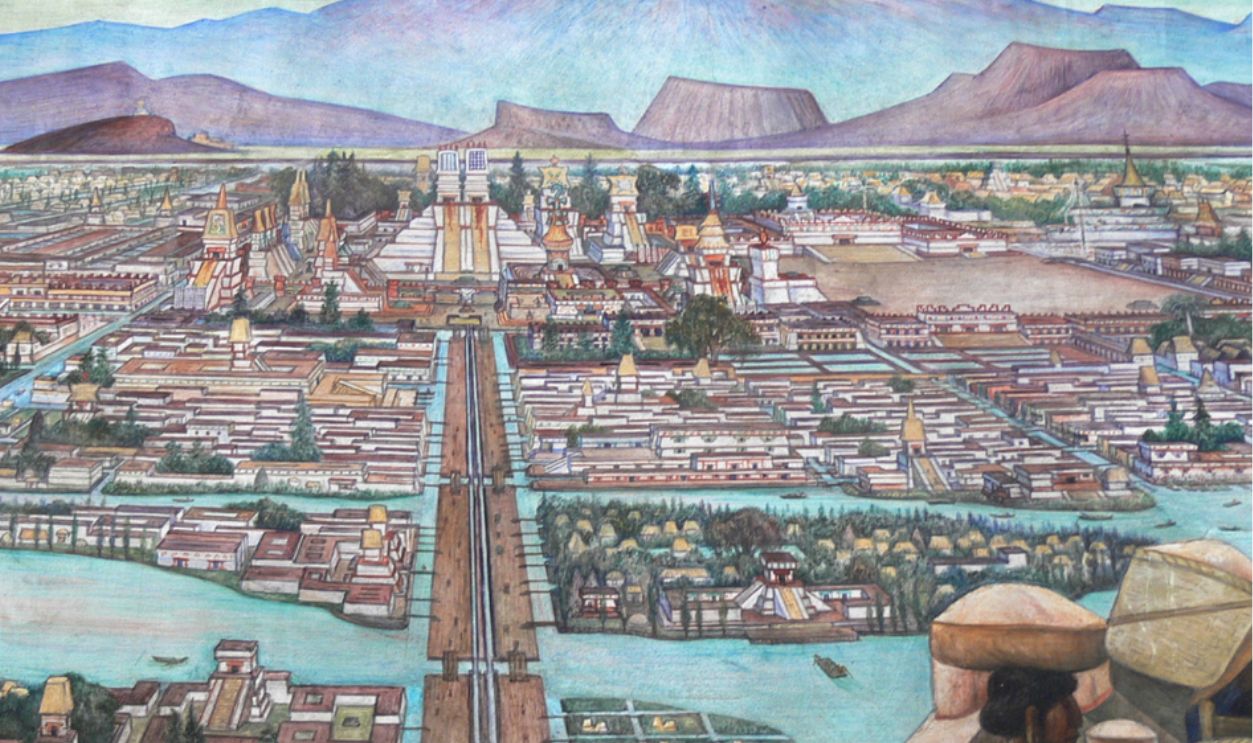 Diego Rivera, Wikimedia Commons
Diego Rivera, Wikimedia Commons
His Ways Were Barbaric
Though his exploits brought wealth and power to Spain, they also resulted in immense suffering and the near destruction of Aztec culture. Cortés and his army went through the streets, killing whoever they found, as the city people were no match for the advanced weapons and a smallpox outbreak.
 Ashishbhatnagar72, Wikimedia Commons
Ashishbhatnagar72, Wikimedia Commons
Looting Was On The Top Of His List
Destroying and looting temples was a priority for Cortés and his men. According to Britanicca, it took the Spanish conqueror about three years to take over the whole region of Mesoamerica. He seized several sacred objects like the Mask of Xiuhtecuhtli and sent them to Europe.
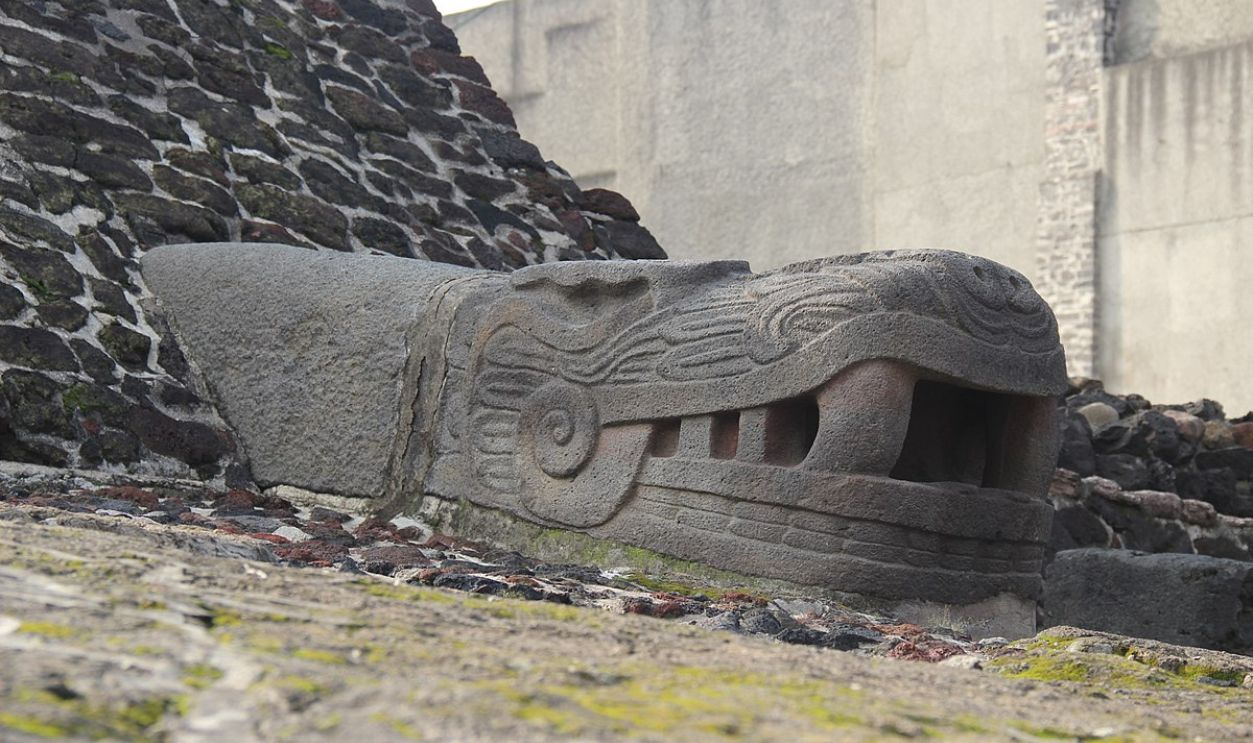 Gary Todd, CC0, Wikimedia Commons
Gary Todd, CC0, Wikimedia Commons
The Origins Of The Mask
The Mask of Xiuhtecuhtli is a masterpiece born from the heart of Mesoamerica, a region that thrived with vibrant cultures long before European explorers set foot on its soil. The Aztecs, among the last great civilizations of this area, were heirs to a heritage rich in artistry and spirituality.
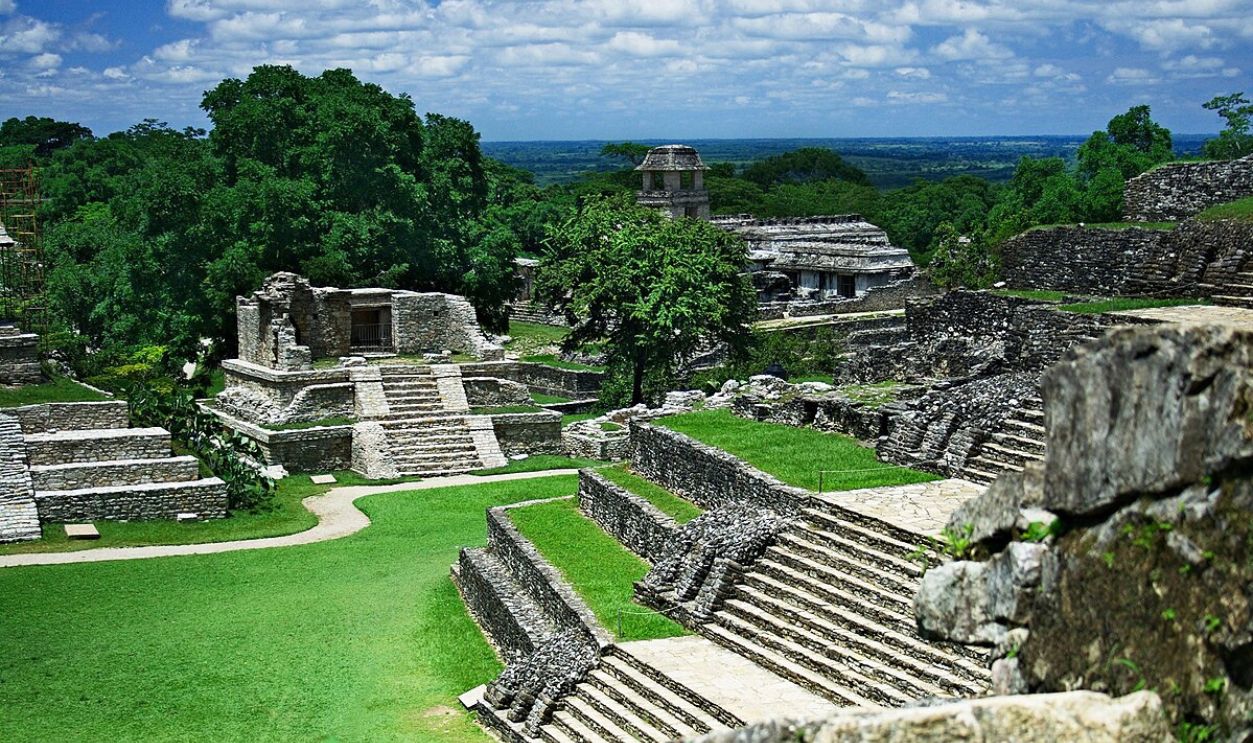 Jan Harenburg, CC BY 4.0, Wikimedia Commons
Jan Harenburg, CC BY 4.0, Wikimedia Commons
It Showed The Peak Of Their Culture
This mask reflects not only their craftsmanship but also their deep connection to nature and the cosmos. The people of Mesoamerica celebrated their gods through intricate art by embedding their beliefs into every curve and color with sacred rituals that govern their everyday lives.
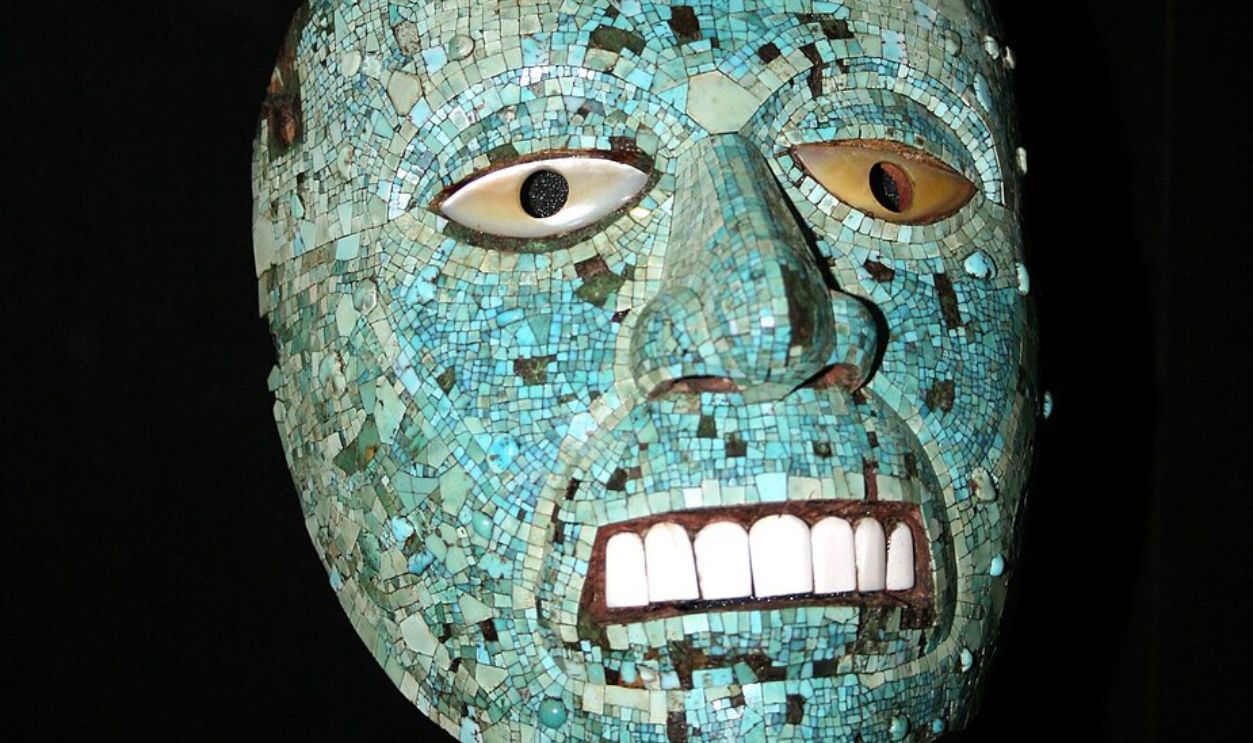 British Museum, CC BY-SA 3.0, Wikimedia Commons
British Museum, CC BY-SA 3.0, Wikimedia Commons
With Incredible Craftsmanship
Xiuhtecuhtli’s mask stands as an immortal proof of the ingenuity and artistic prowess of Aztec artisans. Carved from Spanish cedar, a wood prized for its durability and smooth texture, the mask was changed into a canvas for breathtaking adornments that would dazzle millions.
The Secret Lies In The Details
Tiny turquoise mosaic pieces are carefully cut and polished to create a shimmering surface. Gold-rimmed mother-of-pearl eyes add a lifelike sparkle, while conch shell teeth lend a striking contrast. The interior, coated in cinnabar—a mineral as vibrant as it is toxic—demonstrates both the skill and boldness of its creators.
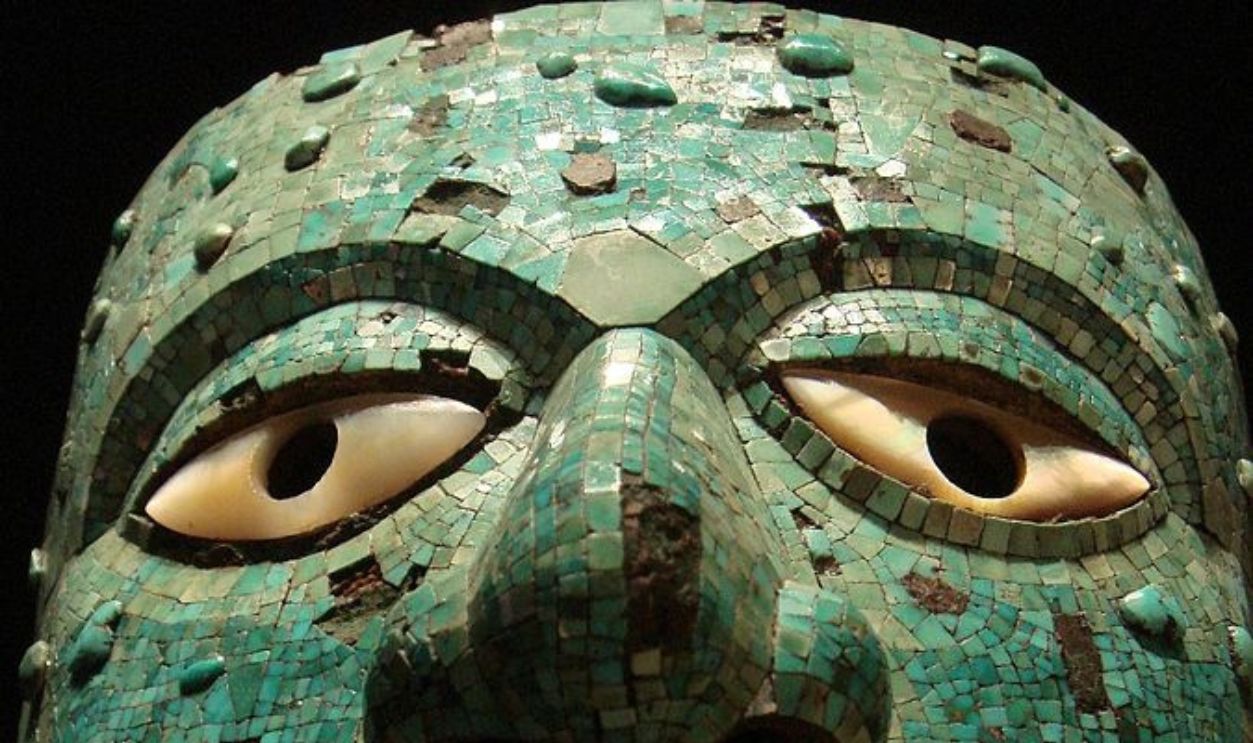 British Museum, Wikimedia Commons
British Museum, Wikimedia Commons
Handcrafted By The Best Of Mesoamerica
Every detail, from the symmetry of the patterns to the delicate holes for affixing, speaks of a culture that viewed art as a sacred act. It's hard to imagine that one culture created such amazing artifacts but fell to the attack of outsiders in a relatively short period.
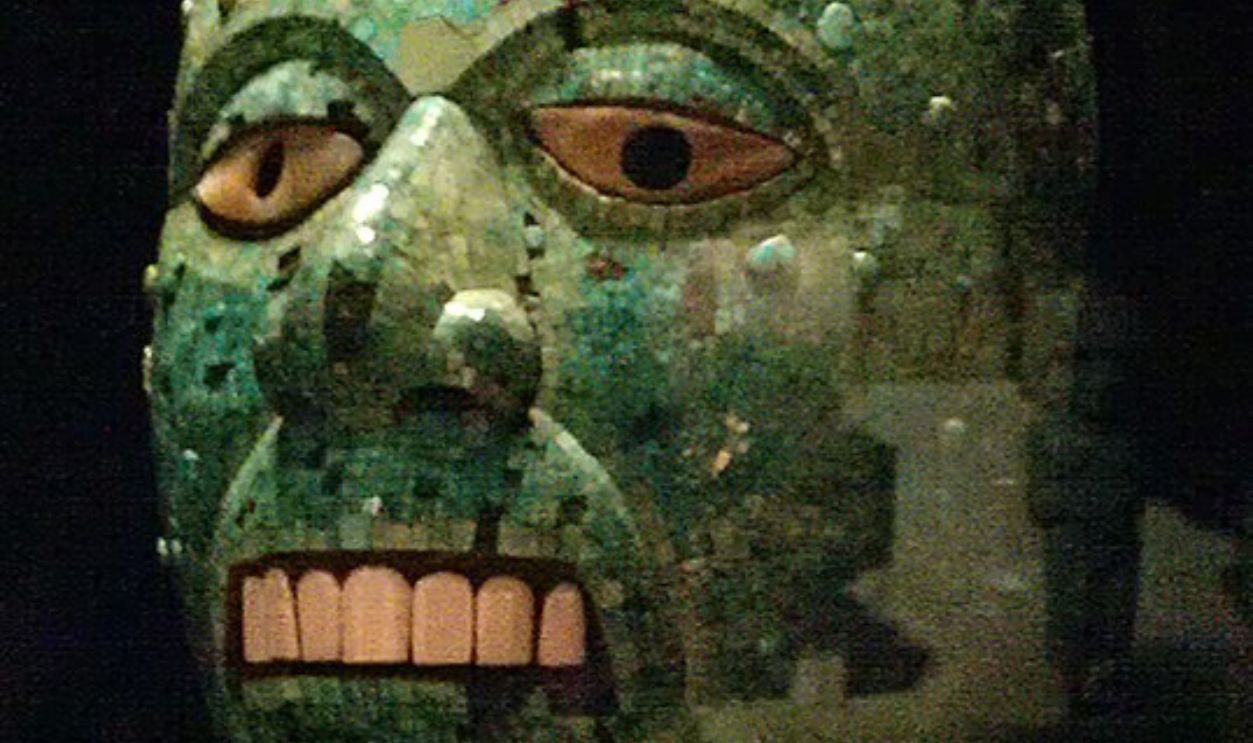 Andres Rueda, CC BY 2.0, Wikimedia Commons
Andres Rueda, CC BY 2.0, Wikimedia Commons
The Fate Of Aztec Treasures
The Spanish conquest of the Aztec Empire in the early 16th century marked a turning point in history, as it saw plundering of the wealth of an advanced civilization. Sacred artifacts and complex artworks were either melted down, destroyed, or shipped to Spain as spoils of war.
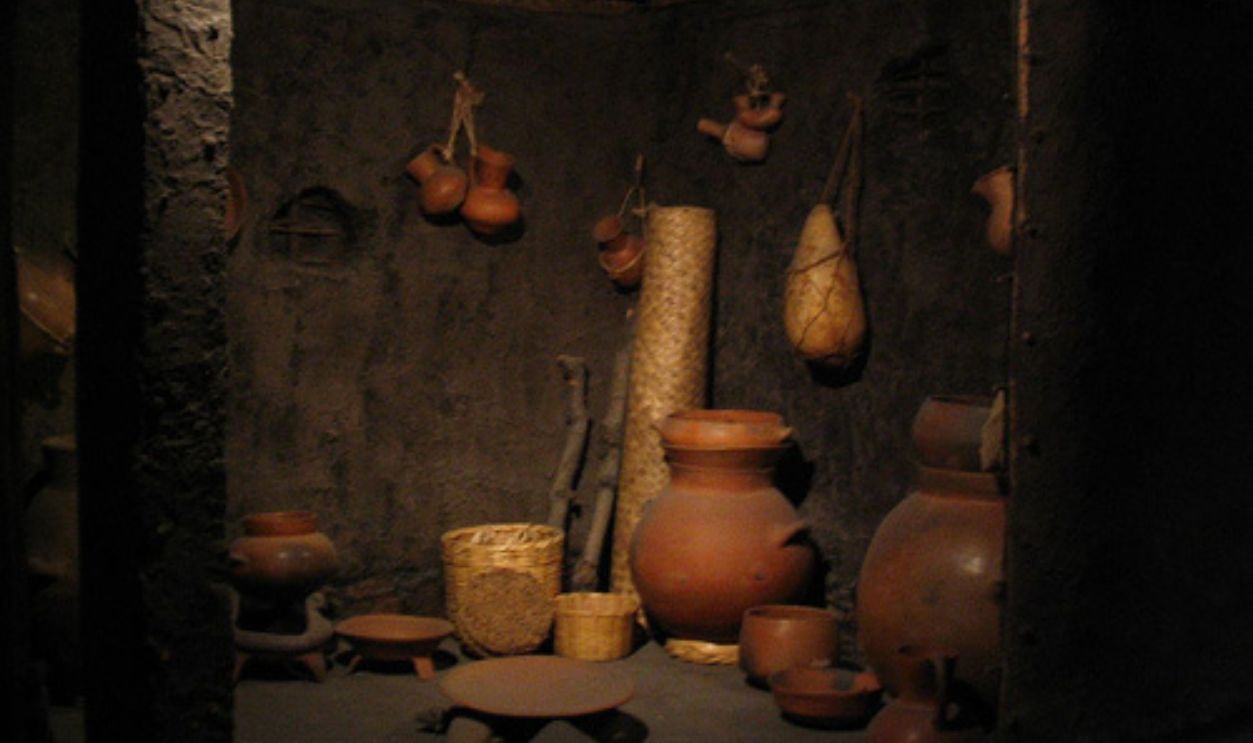 Wallack Family, CC BY 2.0, Wikimedia Commons
Wallack Family, CC BY 2.0, Wikimedia Commons
And The Mask Wasn't Spared
Xiuhtecuhtli’s mask was among the treasures that survived this upheaval, though its sacred meaning was likely lost to the conquistadors. The cultural erasure that accompanied the conquest meant that many objects became mere curiosities in European collections, stripped of the profound stories they once told.
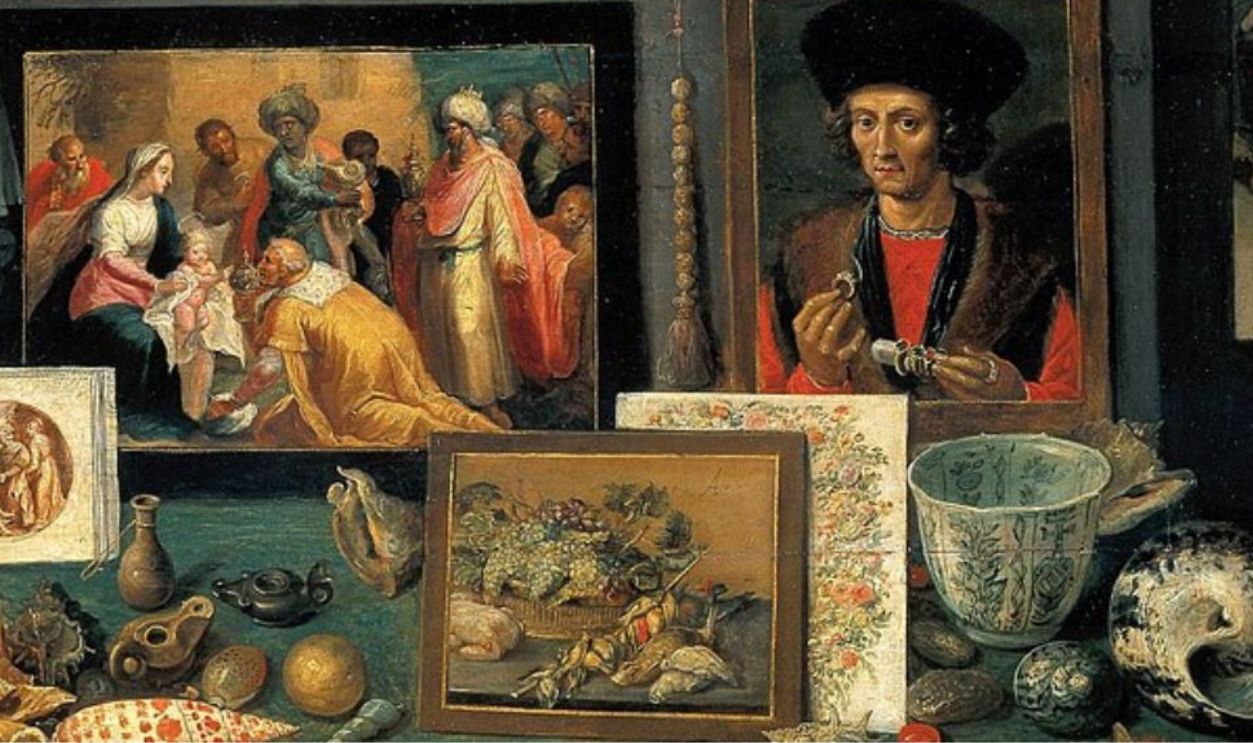 Frans Francken the Younger, Wikimedia Commons
Frans Francken the Younger, Wikimedia Commons
A Journey Across The Atlantic
Nobody knows for sure when or how the Mask of Xiuhtecuhtli left its homeland. But Cortés probably sent it on a trip across the Atlantic with other artifacts that he presented as a gift to the Roman Emperor, Charles V.
 Juan Pantoja de la Cruz, Wikimedia Commons
Juan Pantoja de la Cruz, Wikimedia Commons
Current Home
Today, the Mask of Xiuhtecuhtli resides in the British Museum, where it serves as a bridge between worlds. Displayed among other treasures from ancient civilizations, the mask draws visitors with its beauty and enigmatic history. But what did the Aztecs use it for?
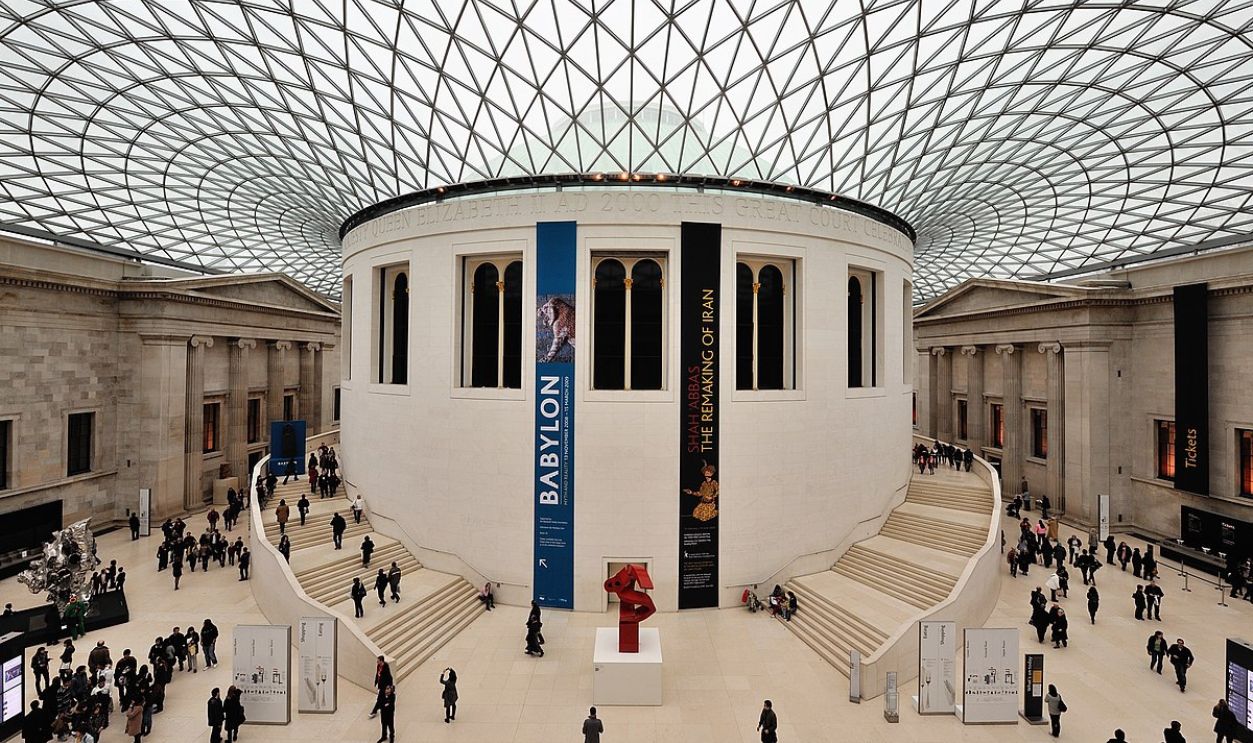 Eric Pouhier, CC BY-SA 3.0, Wikimedia Commons
Eric Pouhier, CC BY-SA 3.0, Wikimedia Commons
Many Questions Are Left Unanswered
While the museum provides context about its origins, questions linger about its true purpose. The mask has become a focal point for discussions on cultural heritage and colonialism. By preserving the mask, the British Museum invites audiences to reflect on the Aztecs' incredible legacy and the complexities of history.
The Lord Of Fire
Xiuhtecuhtli is the Aztec god of fire, life, day, heat, and renewal. He represented the essential elements of existence and the cosmic cycles that governed the Aztec worldview. He's referred to by many names in various historical sources that show his different aspects.
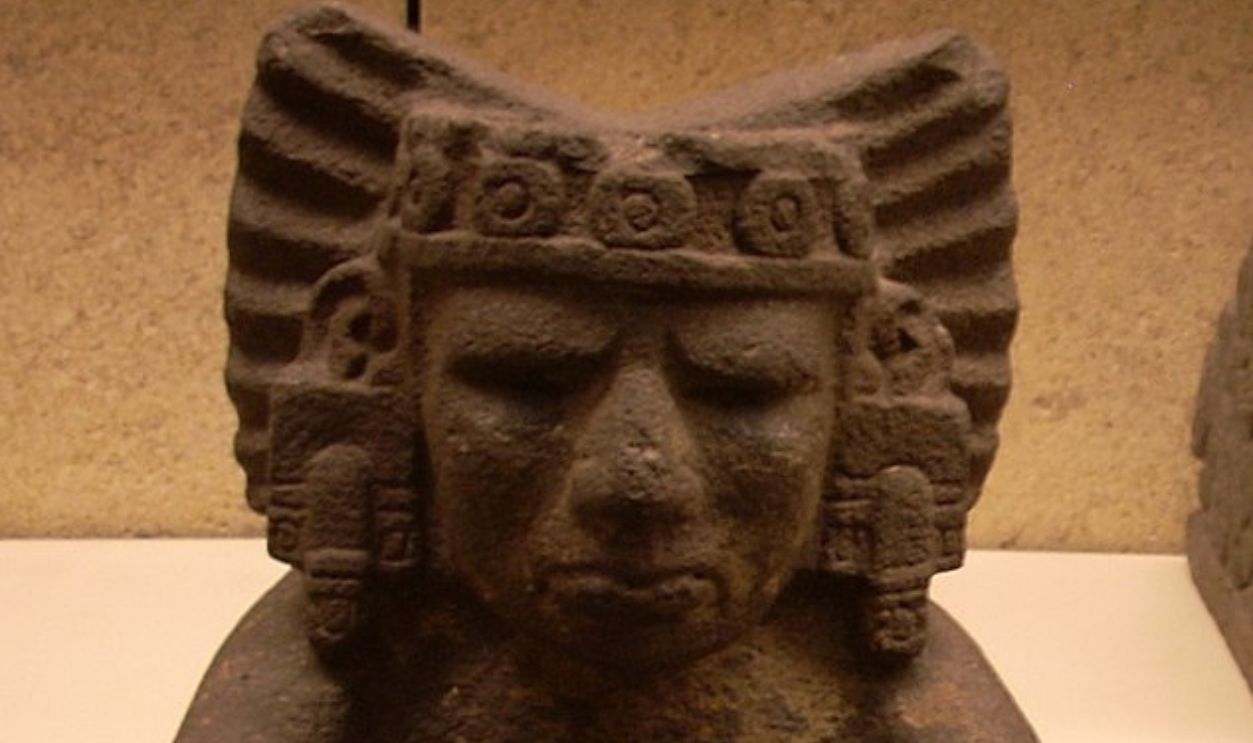 British Museum, CC BY-SA 3.0 Wikimedia Commons
British Museum, CC BY-SA 3.0 Wikimedia Commons
Turquoise Was His Symbol
Known as the "Turquoise Lord," his association with this precious gemstone symbolized sacred fire and eternal renewal. Turquoise's vibrant blue-green hues mirrored the interplay between water and fire, two opposing yet interdependent forces that controlled the lives of the Aztecs.
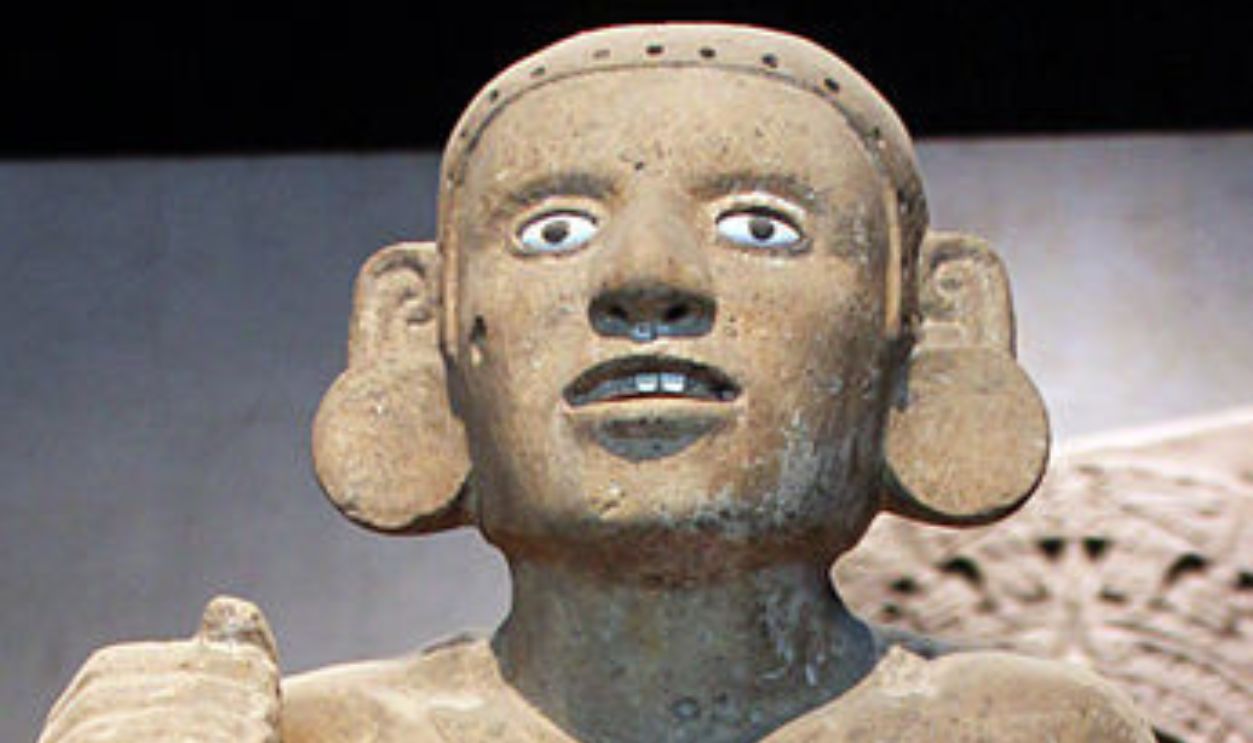 Anagoria, CC BY 3.0, Wikimedia Commons
Anagoria, CC BY 3.0, Wikimedia Commons
Not Your Usual God Of Fire
Xiuhtecuhtli was more than a deity of flames, as he represented the energy that fueled creation and destruction in the eternal dance of life and death. By wearing masks and symbols of Xiuhtecuhtli, Aztec priests channeled his power during ceremonies to ensure the continued balance of the universe.
The Role Of Fire In Aztec Culture And Rituals
Fire was the lifeblood of the Aztec world and a sacred force connecting humanity to the divine. It represented both the physical and spiritual realms, as fire warmed homes and illuminated temples (also symbolizing the gods' presence). It played a central role in Aztec rituals.
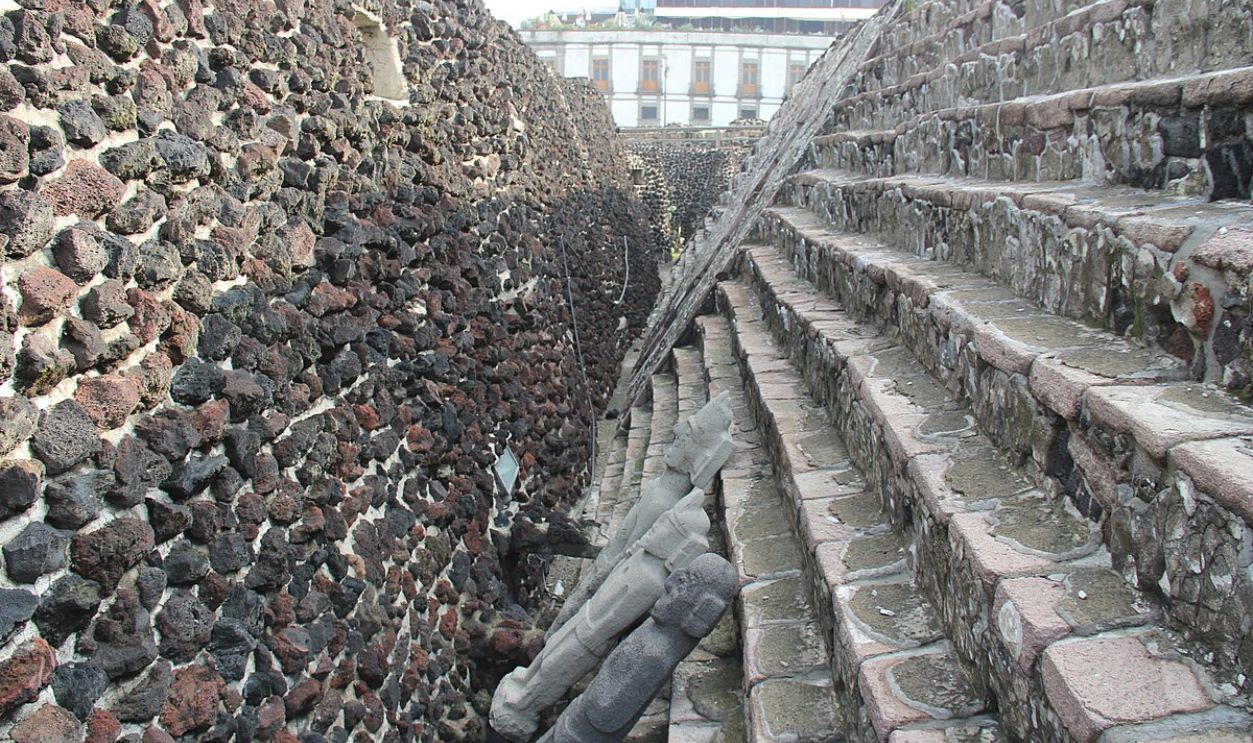 Gary Todd, CC0, Wikimedia Commons
Gary Todd, CC0, Wikimedia Commons
Believing In Fire's Power
The Aztecs believed that maintaining harmony with the divine required constant sacrifices, and fire was the gateway for these offerings to reach the heavens. Without fire, the cosmic balance would falter, leading to chaos—a fear that fueled their devotion to deities like Xiuhtecuhtli.
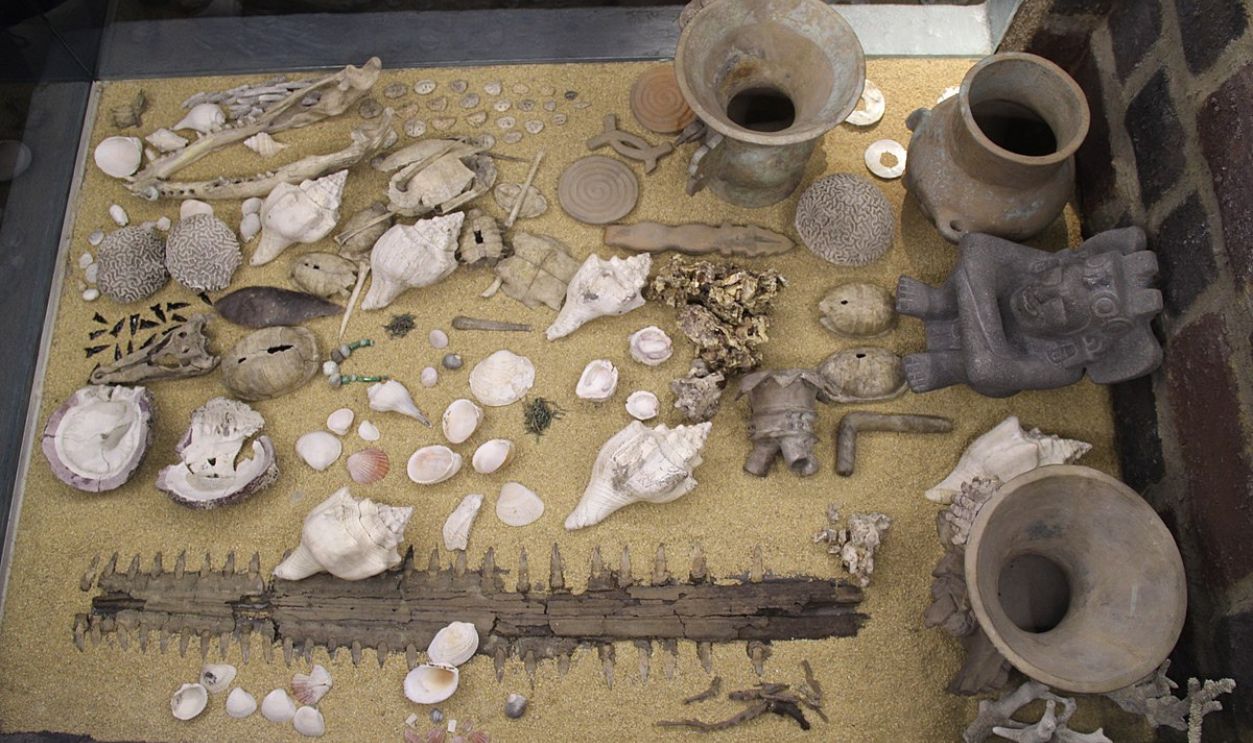 Gary Todd, CC0, Wikimedia Commons
Gary Todd, CC0, Wikimedia Commons
The Holy Fire Of Tenochtitlan's Fire Temple
In the heart of Tenochtitlan, the Aztec capital, burned a sacred flame in the Fire Temple dedicated to Xiuhtecuhtli. This holy fire was never allowed to extinguish to symbolize the unbroken continuity of life, as it was a medium for offerings to the gods.
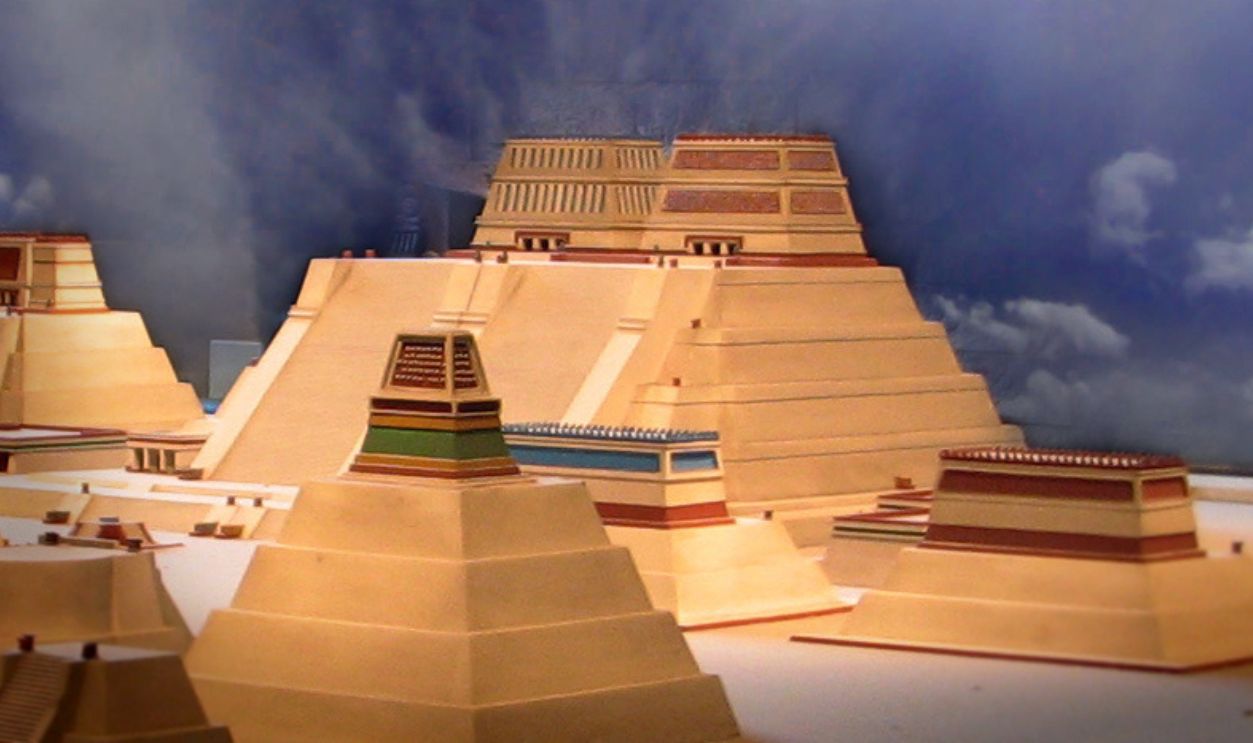 s shepherd, CC BY 2.0, Wikimedia Commons
s shepherd, CC BY 2.0, Wikimedia Commons
Keeping The Fire Lit
From this central flame, all other fires in the city were lit to create a direct connection between the divine and the everyday lives of the Aztec people. The temple itself was a place of profound reverence, where priests performed sacred rituals to ensure the survival of their civilization.
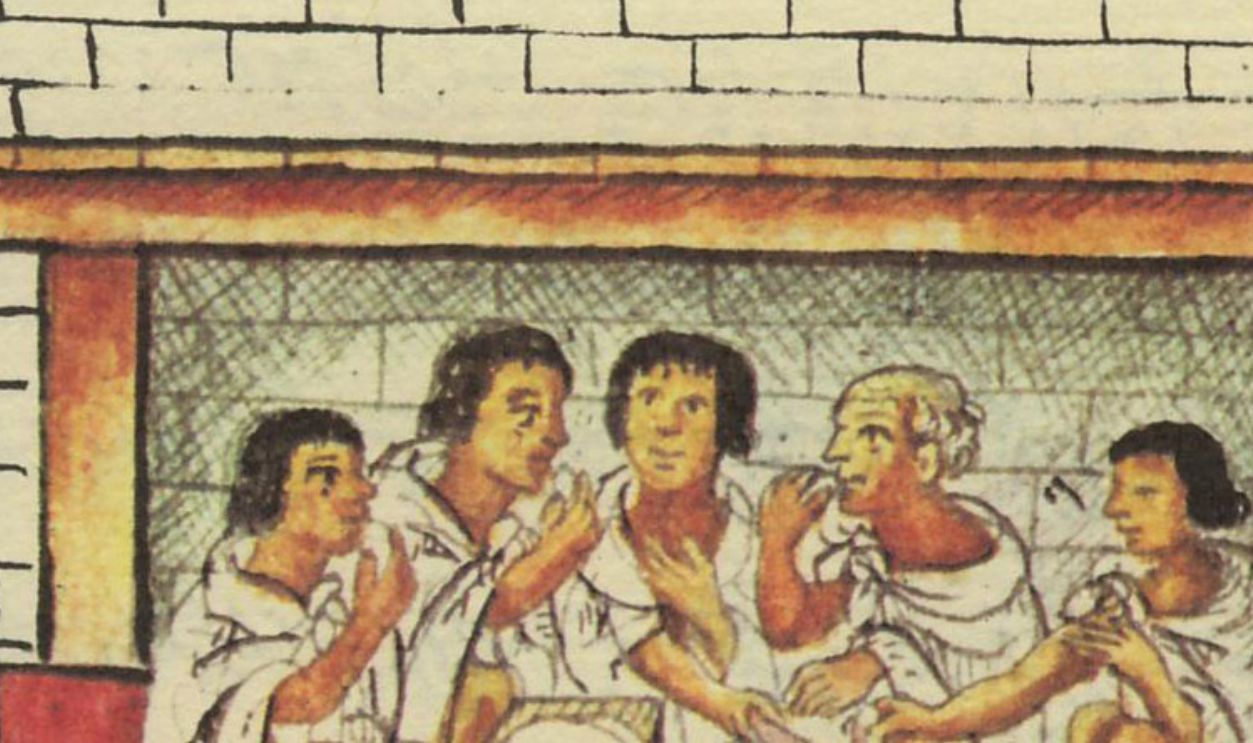 Unknown Author, Wikimedia Commons
Unknown Author, Wikimedia Commons
The New Fire Ceremony
One of the most significant rituals was the New Fire Ceremony, a dramatic event held every 52 years to mark the completion of a full cycle in the Aztec calendar. As the old cycle ended, the holy fire was extinguished throughout the empire to plunge Tenochtitlan into darkness.
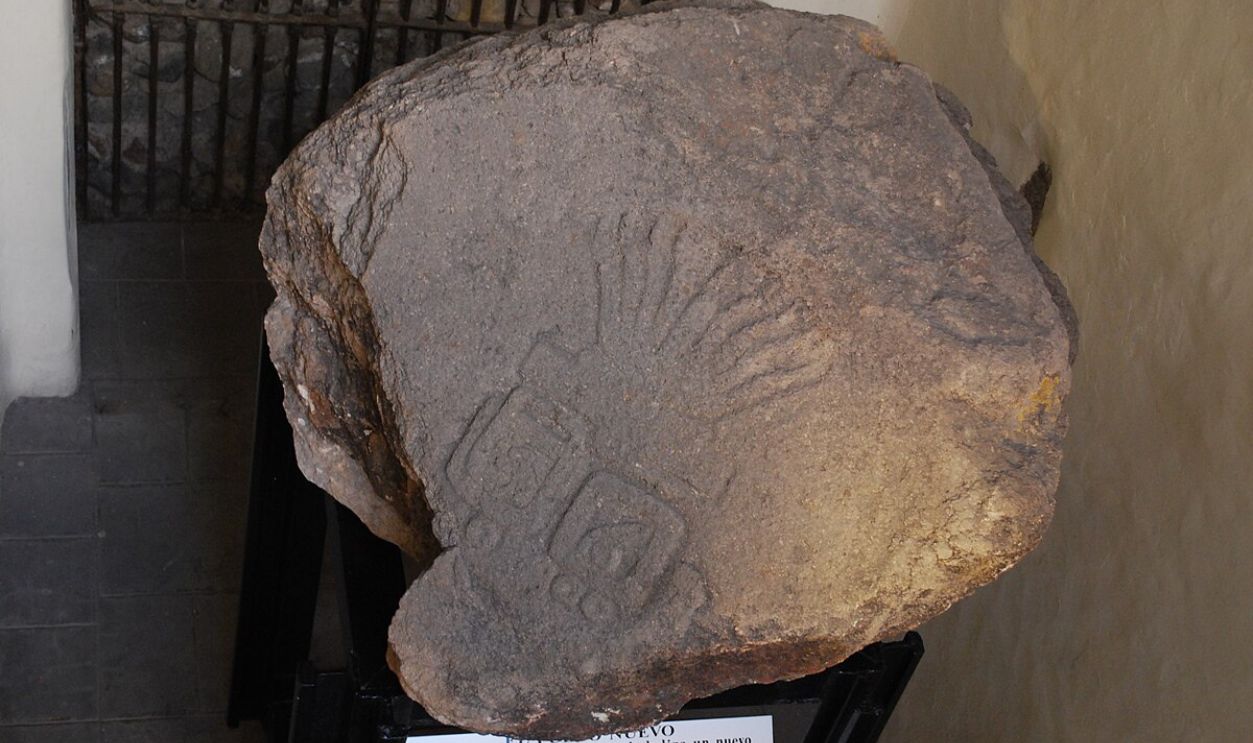 AlejandroLinaresGarcia, CC BY-SA 4.0, Wikimedia Commons
AlejandroLinaresGarcia, CC BY-SA 4.0, Wikimedia Commons
After Darkness, There Was Light
On the peak of a sacred mountain, the high priest kindled a new flame on the chest of a sacrificial victim while wearing a mask of Xiuhtecuhtli. When the fire ignited, it represented the rebirth of the sun and the renewal of the world for another half-century.
It Was Time For Light
Blood rituals signified the biggest sacrifice. For this reason, after throwing the heart of the captive in the fire, the people of the city also put their blood in the flames. Then, these flames were then distributed to relight the city's fires to restore life and order to the empire.
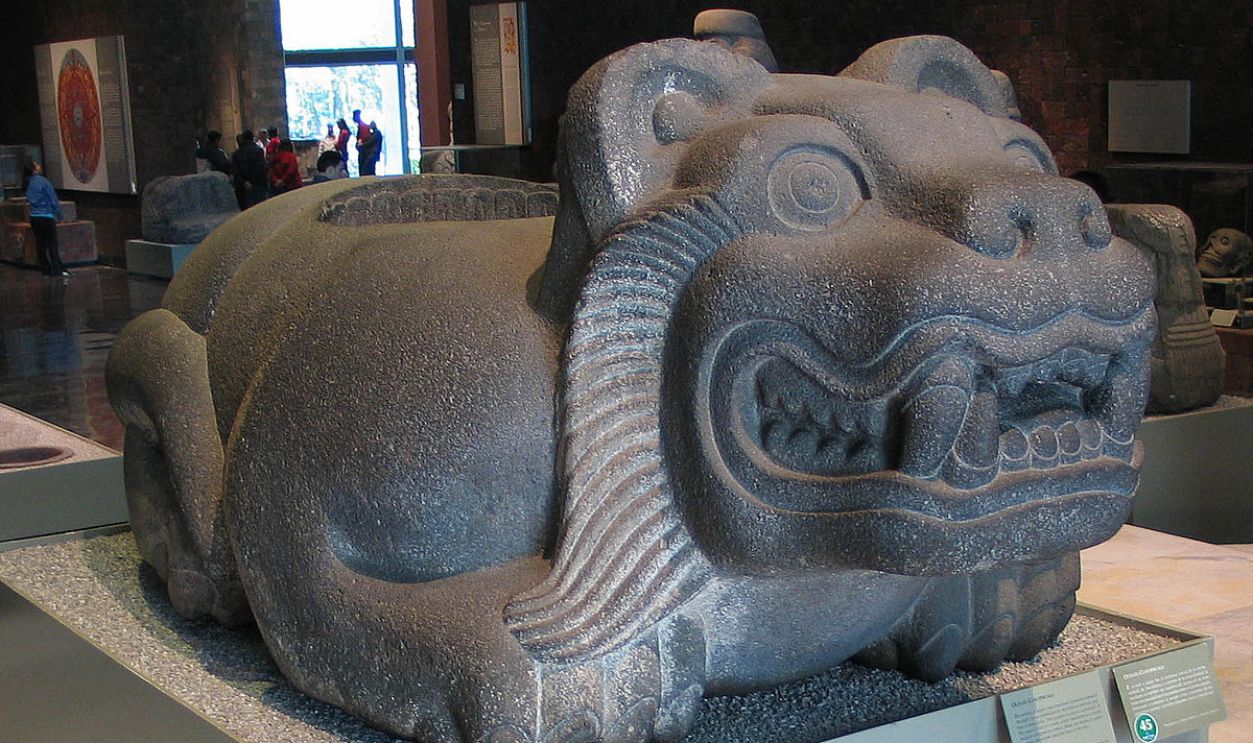 Luidger, CC BY-SA 3.0, Wikimedia Commons
Luidger, CC BY-SA 3.0, Wikimedia Commons
Renewal And Rebirth
The butterfly, subtly represented in the darker turquoise patterns on the Mask of Xiuhtecuhtli, was a powerful symbol of renewal and transformation in Aztec culture. Butterflies, often associated with the souls of warriors and sacrificial victims, represented the cyclical nature of life, death, and rebirth.
 Charles J. Sharp, CC BY-SA 4.0, Wikimedia Commons
Charles J. Sharp, CC BY-SA 4.0, Wikimedia Commons
A Tribute To Lost Souls
According to Mexicolore, the Aztecs thought that the butterfly's metamorphosis from caterpillar to butterfly mirrored the spiritual journey of change and renewal. They represented the souls of soldiers who died in battle, women who lost their lives at birth, or people who were sacrificed.
 Maria Sibylla Merian, Wikimedia Commons
Maria Sibylla Merian, Wikimedia Commons
A Connection To The Fire Lord
The butterfly's connection to Xiuhtecuhtli reinforced the idea that fire, like the butterfly, was a force of transformation—burning away the old to make way for the new. This delicate yet profound imagery encapsulated the Aztecs' deep reverence for nature's cycles and their hope for continuity through renewal.
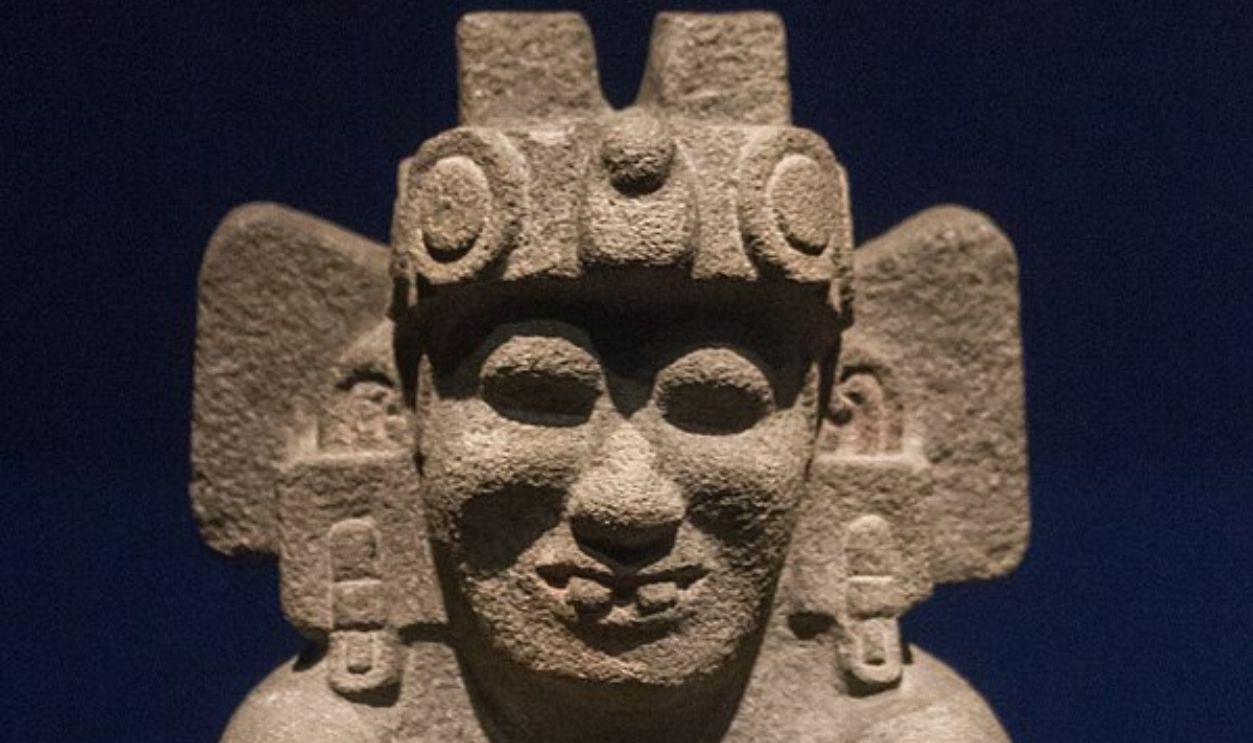 Mexica, CC BY 4.0, Wikimedia Commons
Mexica, CC BY 4.0, Wikimedia Commons
But The Mask Might Have Another Purpose
There's no way to verify that this mask belonged to Xiuhtecuhtli. As a matter of fact, some sources suggest that it represents Nanahuatzin. According to Aztec mythology, Nanahuatzin is a humble god who sacrificed himself to man to maintain life on earth.
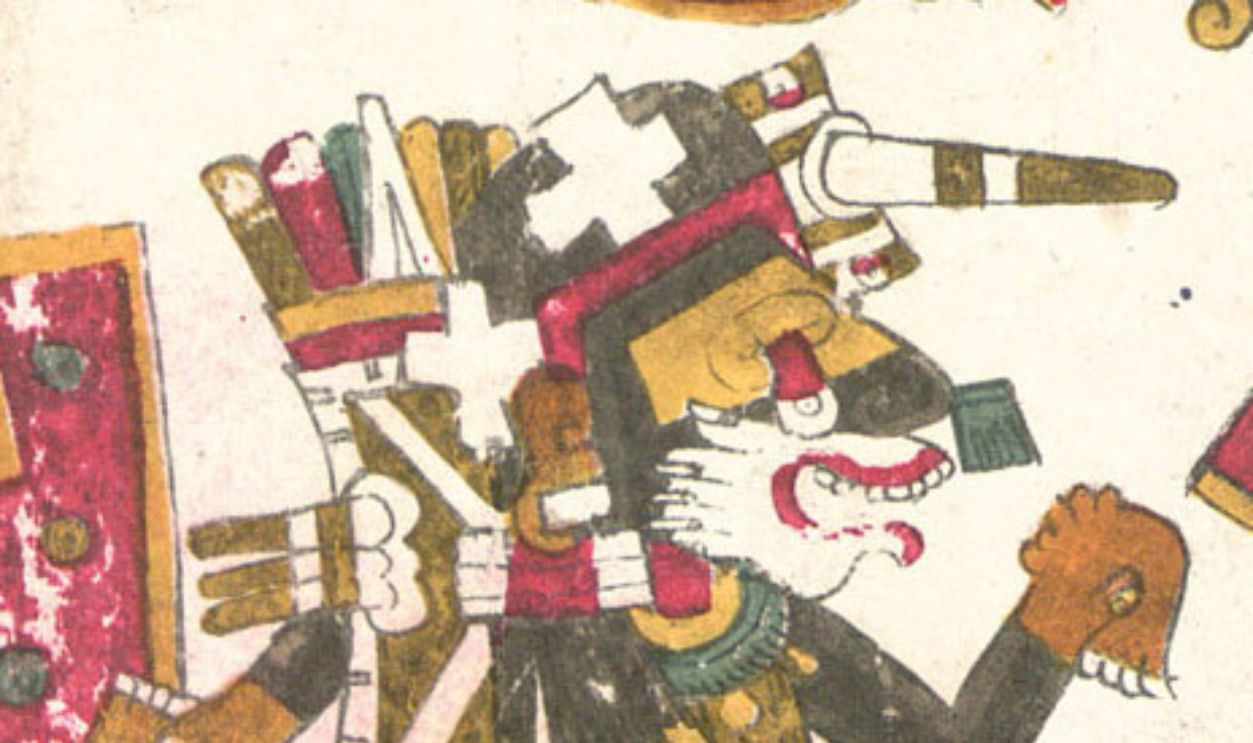 Unknown Author, Wikimedia Commons
Unknown Author, Wikimedia Commons
Meet The Wart-Faced God
According to legend, the humble and wart-faced god in Aztec mythology played a pivotal role in the creation of the sun. Despite his physical imperfections, Nanahuatzin demonstrated unparalleled courage and selflessness that helped humanity and supported the lives of the Aztecs.
He Gave Himself Up
When the gods gathered to create a new sun, they called for a volunteer to sacrifice himself by leaping into a great fire. While the proud and wealthy god Tecuciztecatl initially hesitated, Nanahuatzin showed humility and determination and jumped into the flames first.
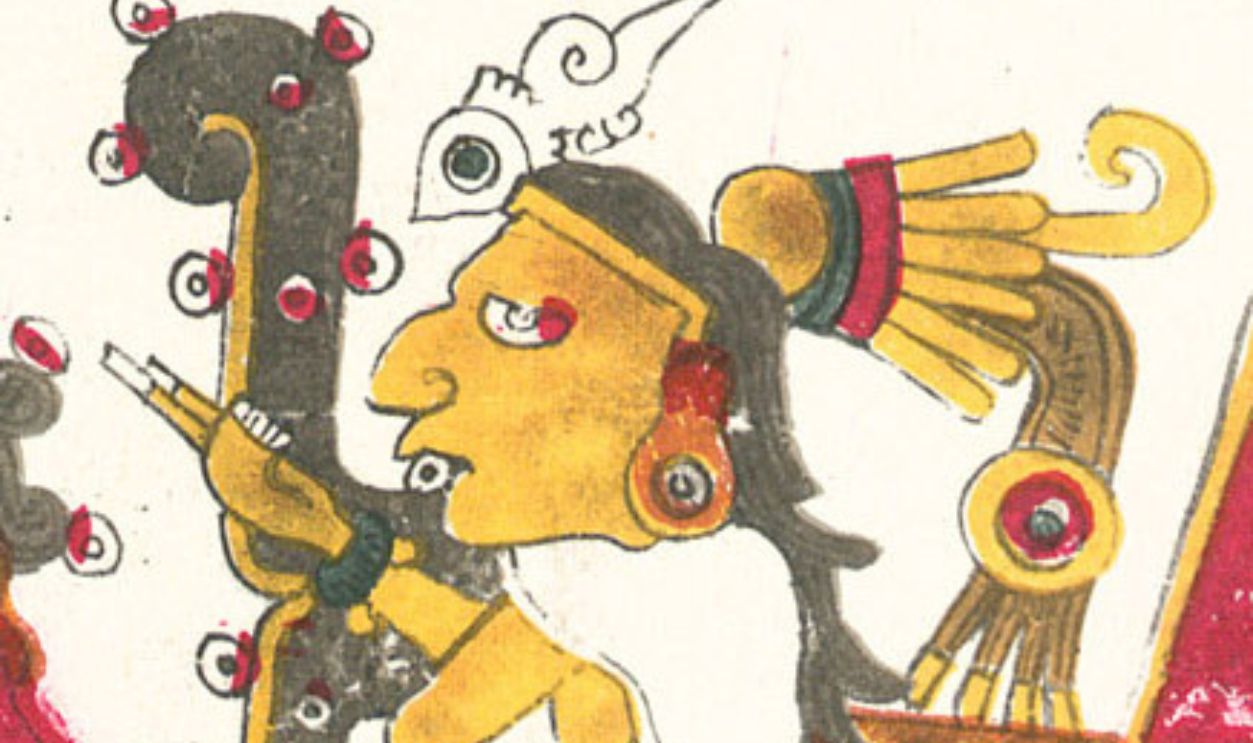 Unknown Author, Wikimedia Commons
Unknown Author, Wikimedia Commons
A Divine Sacrifice
In the ancient Nahuatl language, Nanahuatzin means “full of sores”. His sacrifice transformed him into the blazing sun and symbolized the triumph of spirit over superficial appearance. In another legend, he also helped Quetzalcoatl, who represented wind, to get grains that would become food for humans.
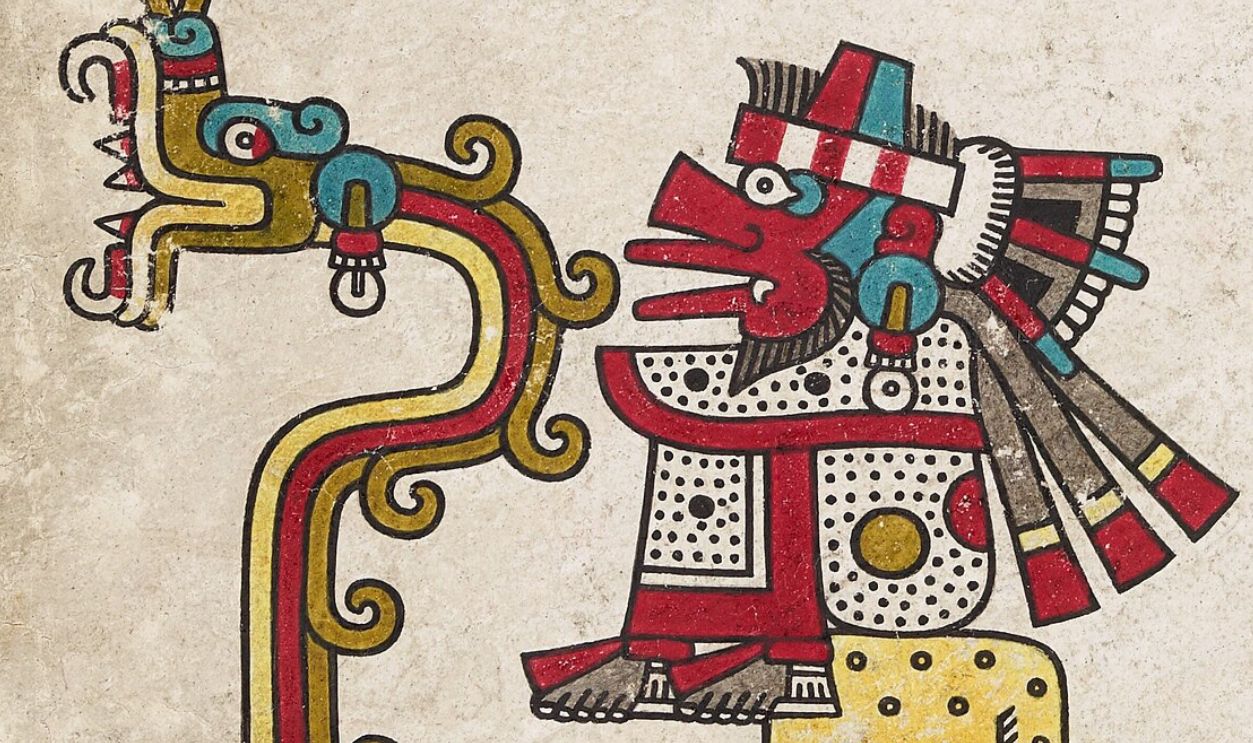 Unknown Author, Wikimedia Commons
Unknown Author, Wikimedia Commons
Mysteries Surrounding The Mask's True Identity
Despite its common association with Xiuhtecuhtli, the true identity of the mask remains shrouded in mystery. The stunning turquoise mosaic and symbolic elements hint at deeper meanings as the ambiguities fuel ongoing debates among historians and archaeologists. However, no definitive evidence links the mask to a specific deity or ritual.
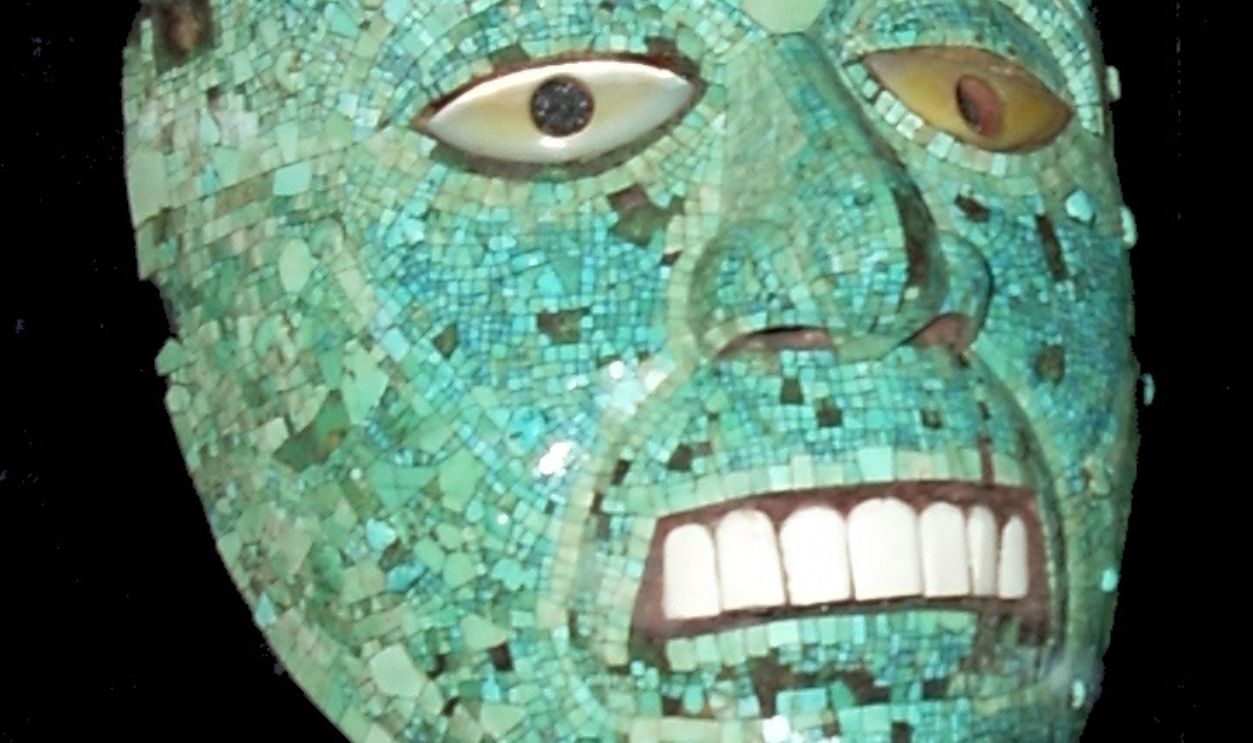 British Museum, CC BY-SA 3.0, Wikimedia Commons
British Museum, CC BY-SA 3.0, Wikimedia Commons
Preserving The Legacy
Efforts to preserve the mask involve advanced conservation techniques that protect its delicate materials while maintaining its vivid turquoise mosaics and unusual design. Additionally, historians are studying the mask to uncover its secrets and answer questions about its true purpose as it continues to fuel curiosity.

